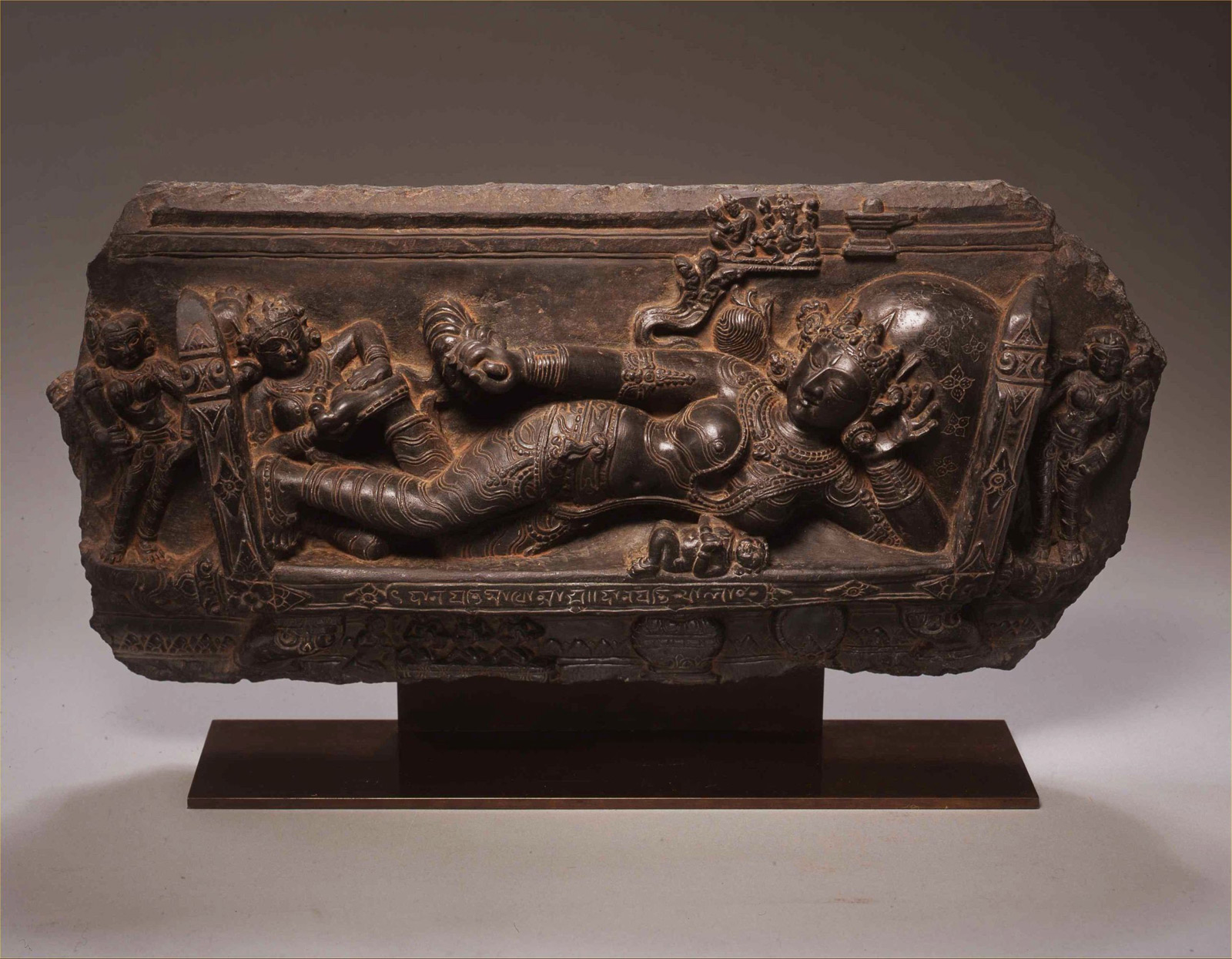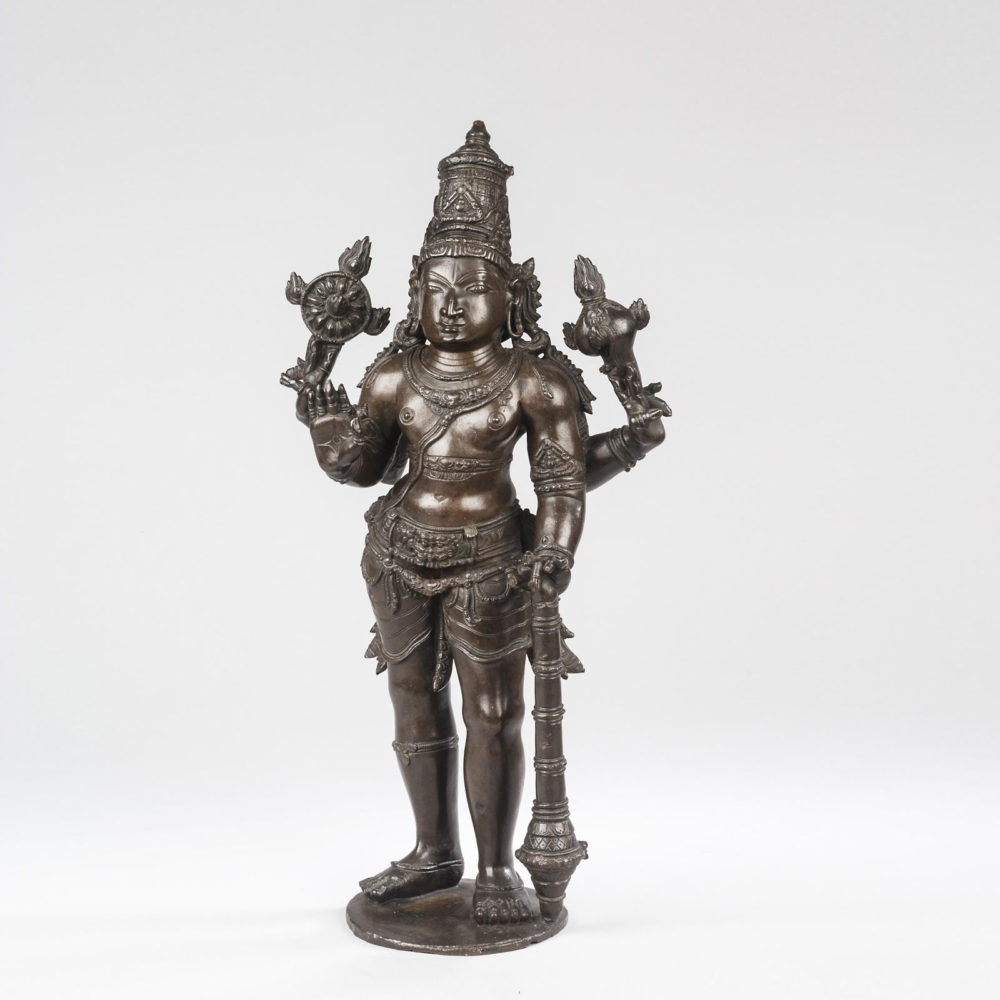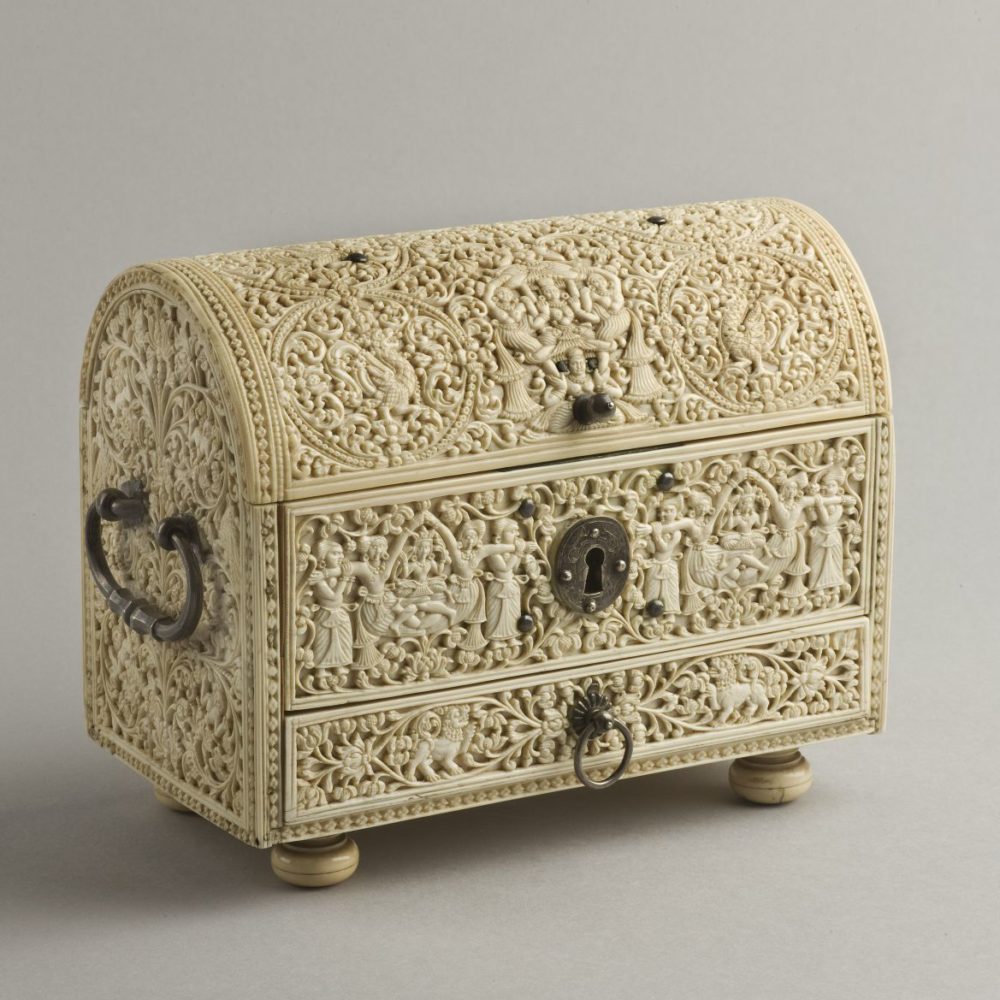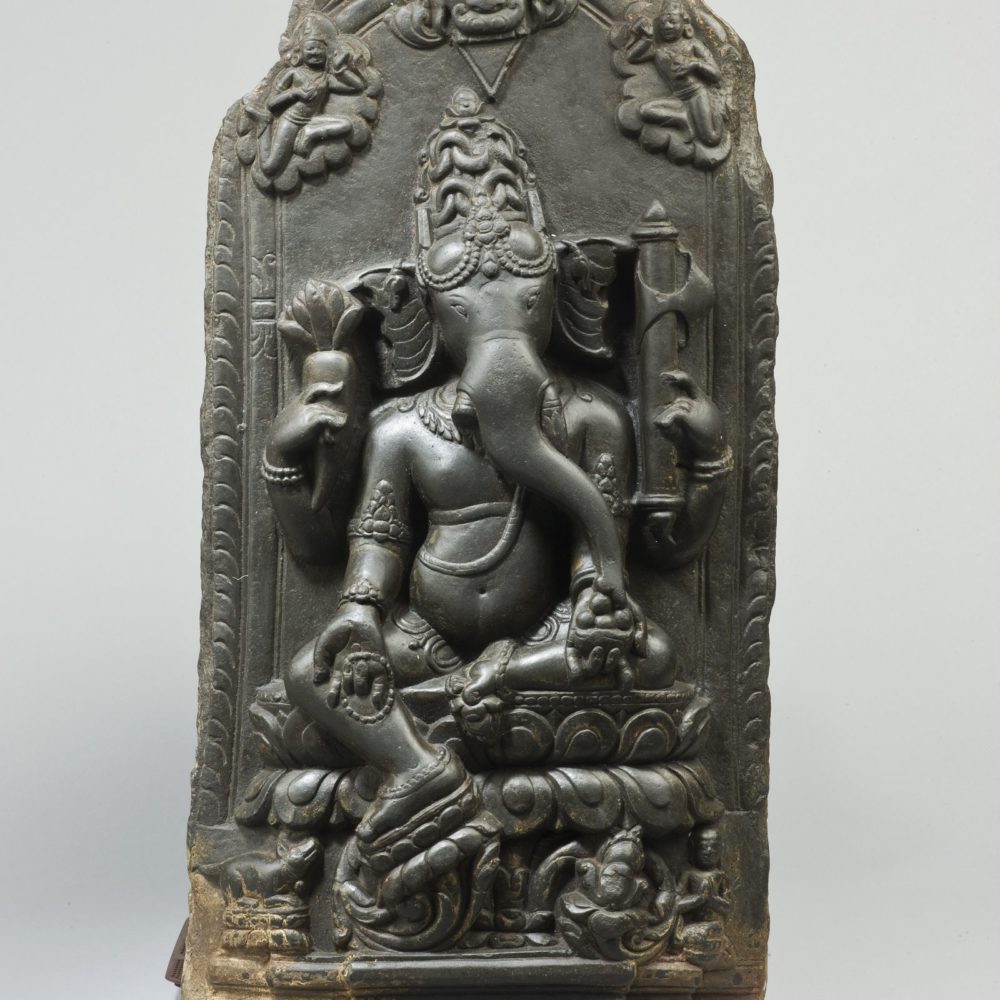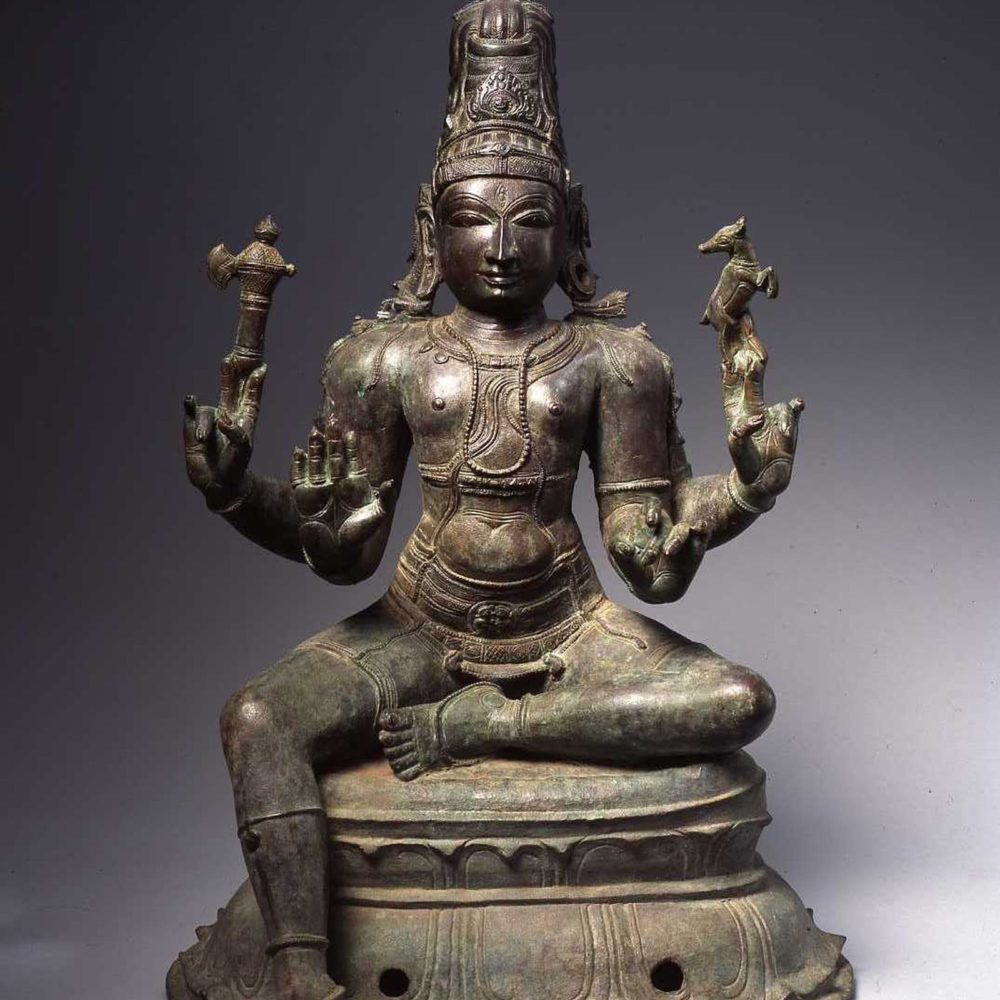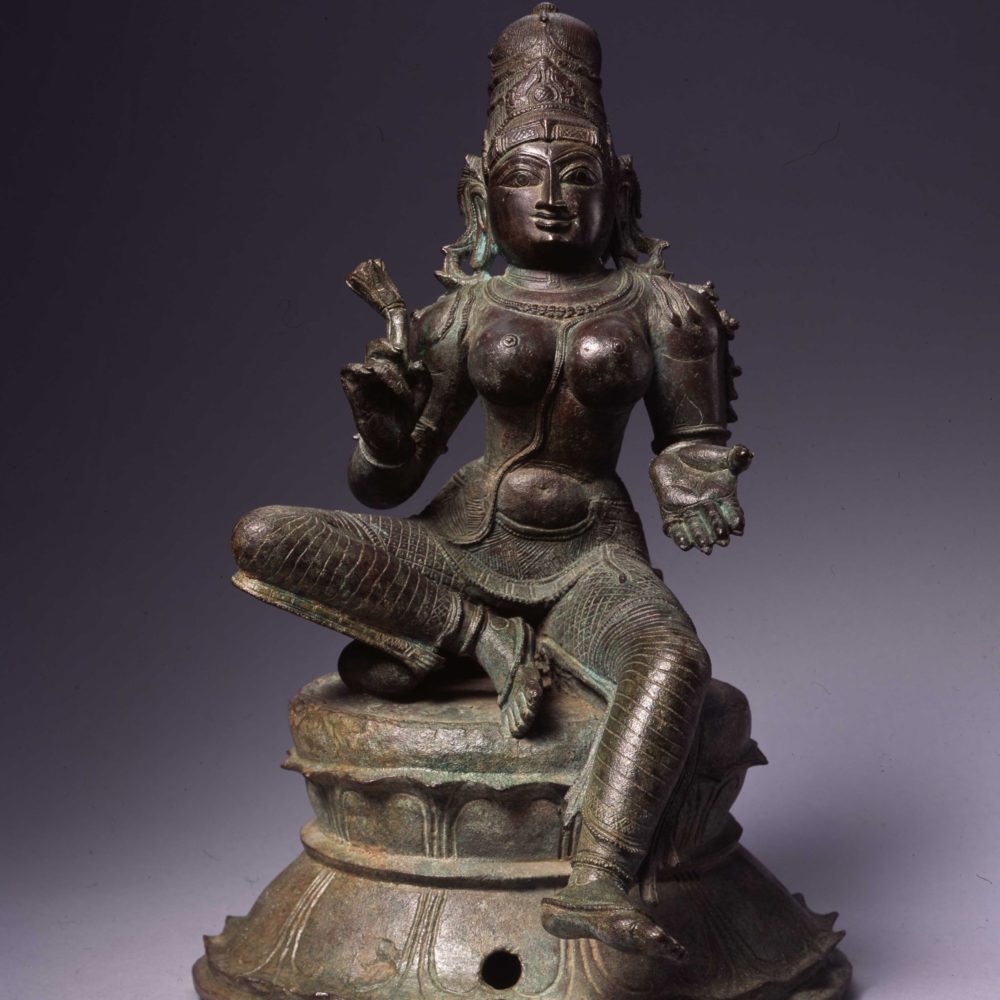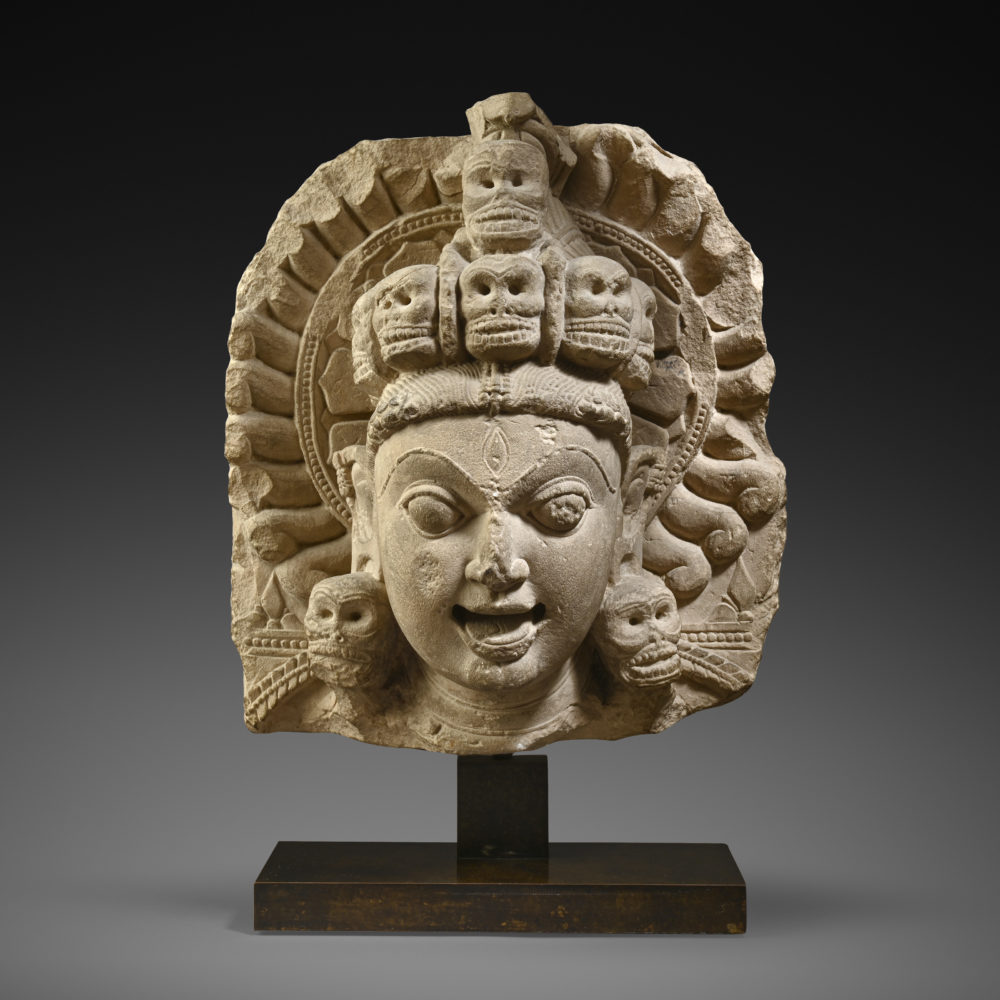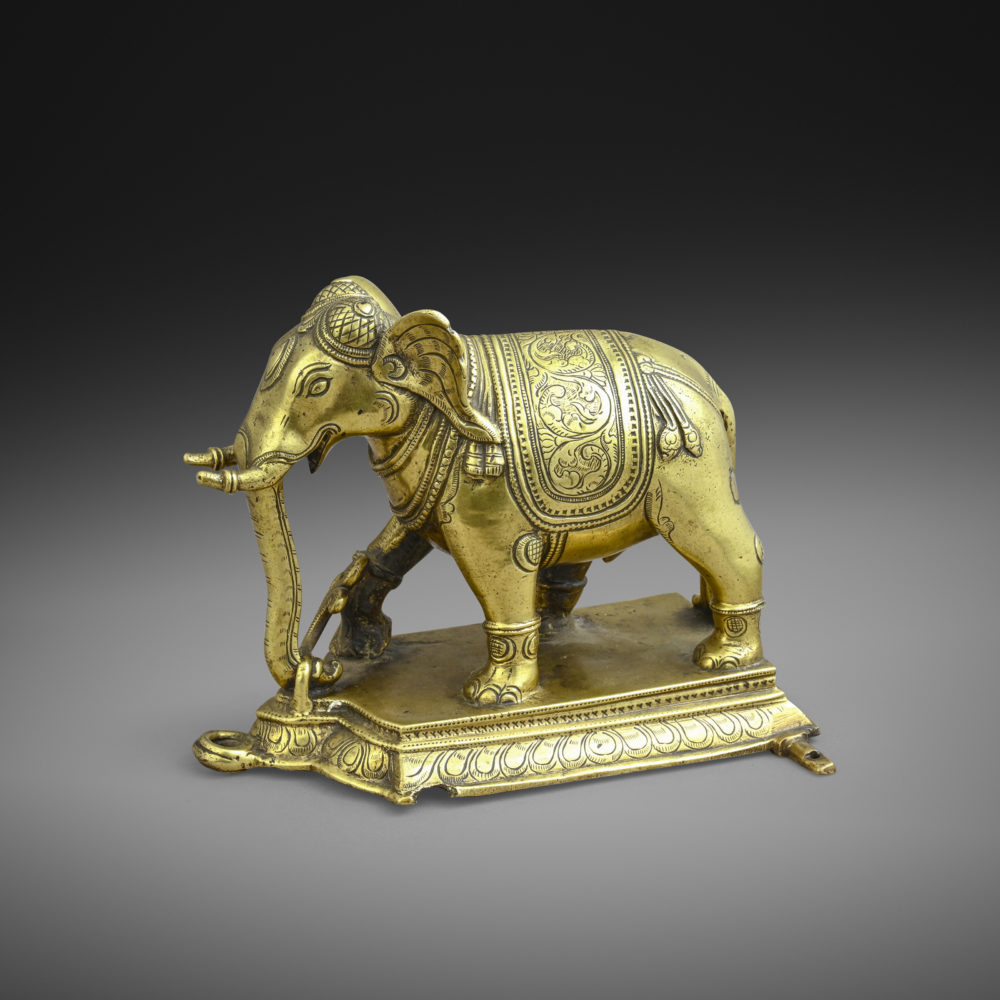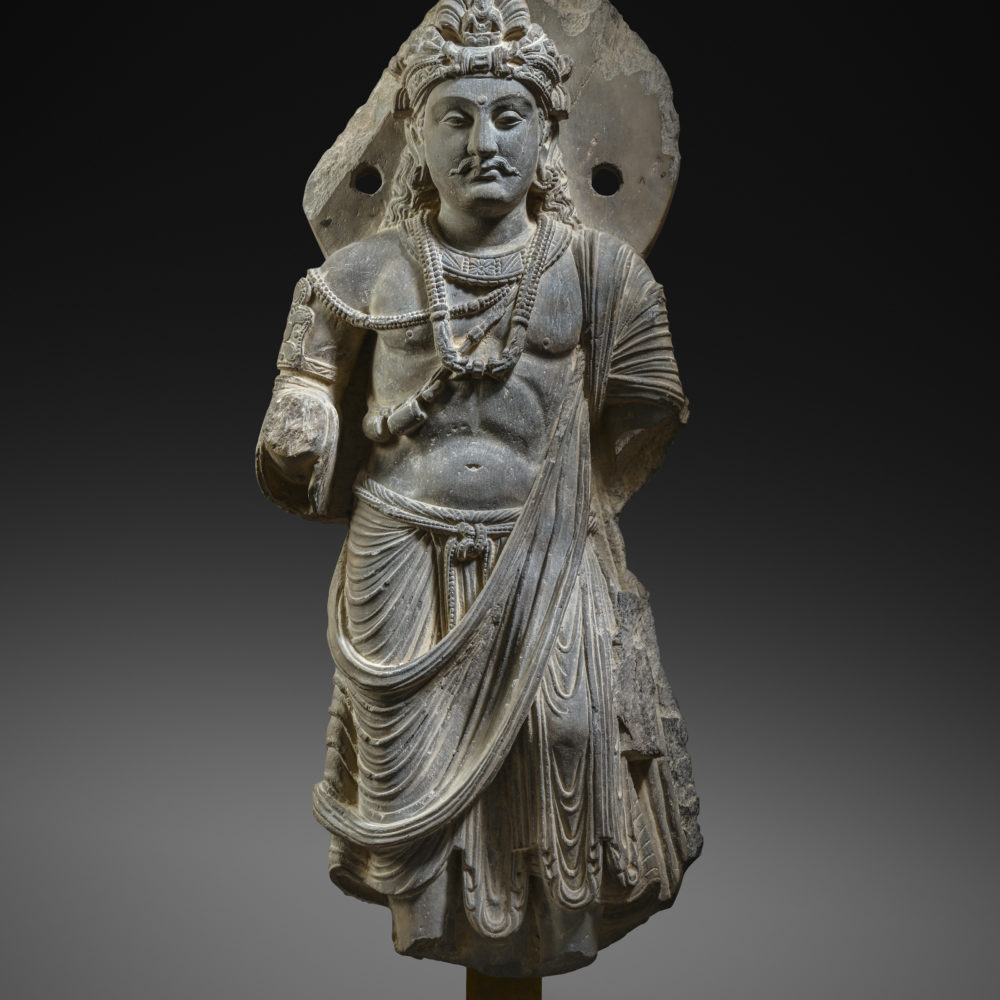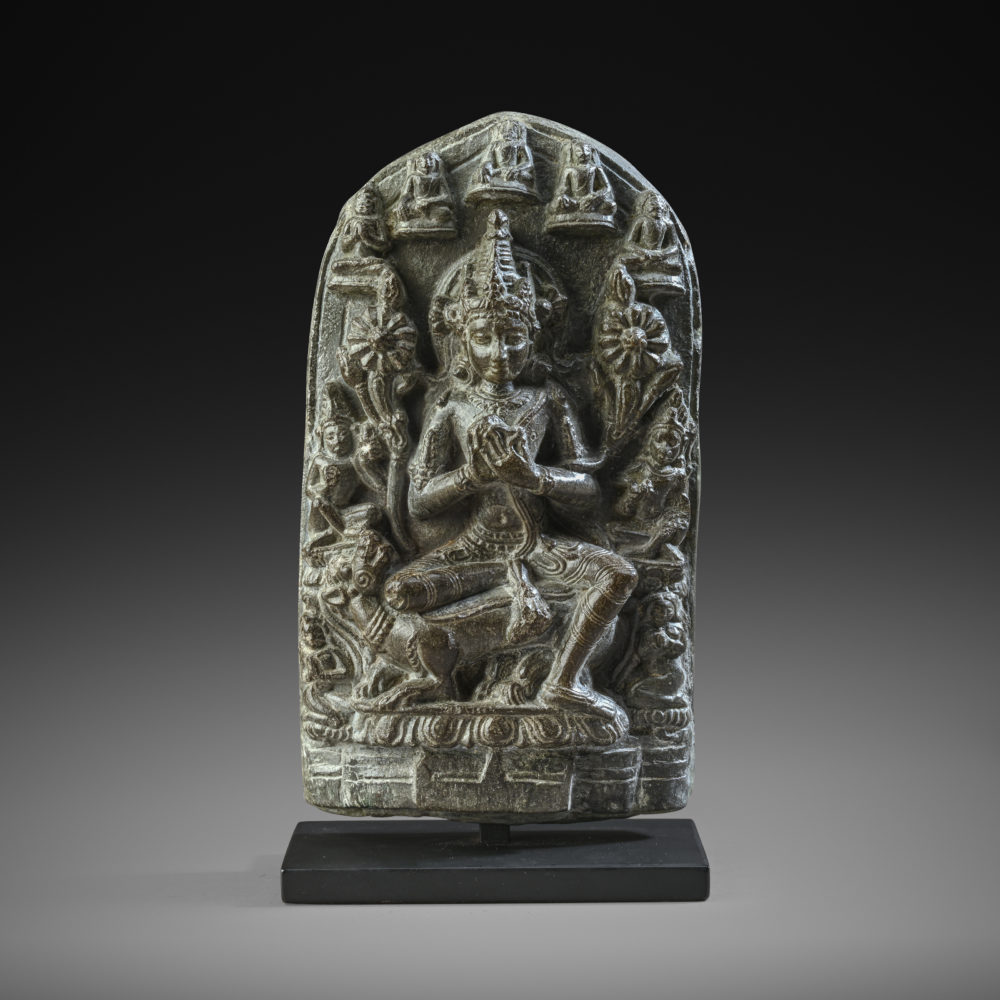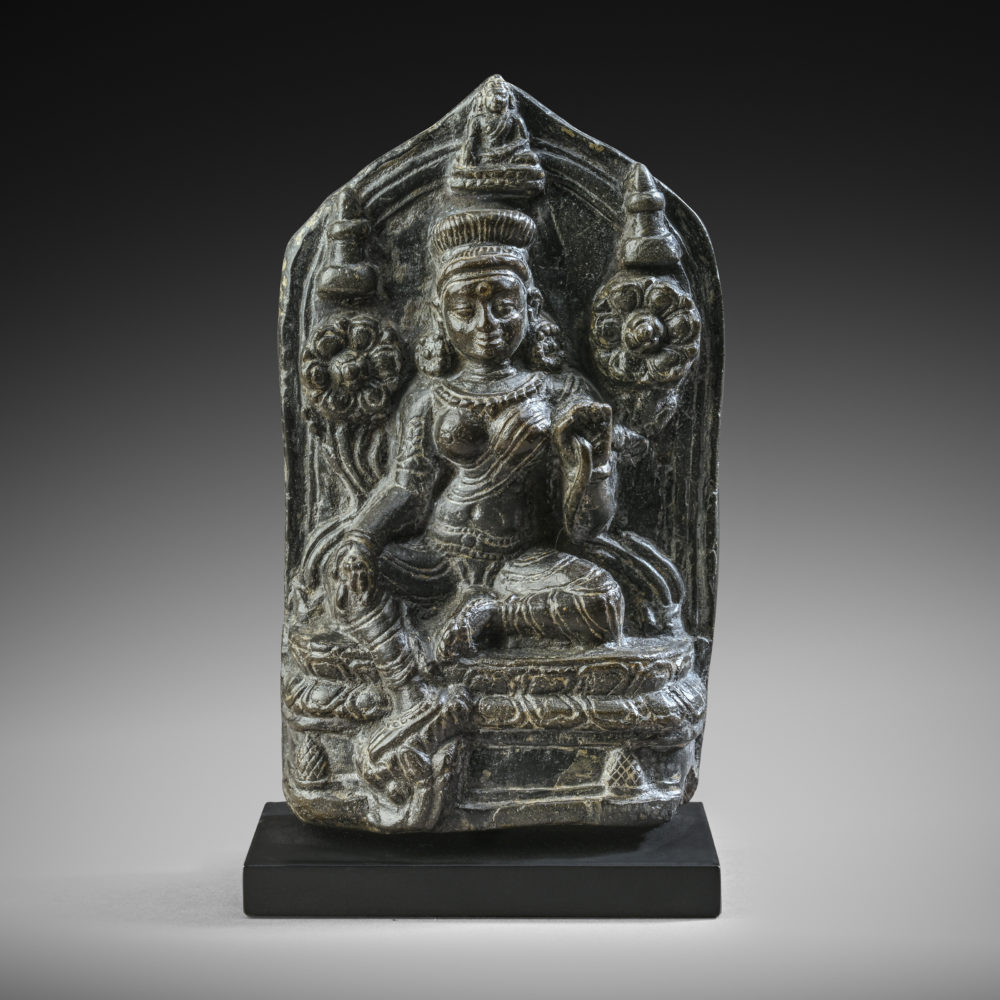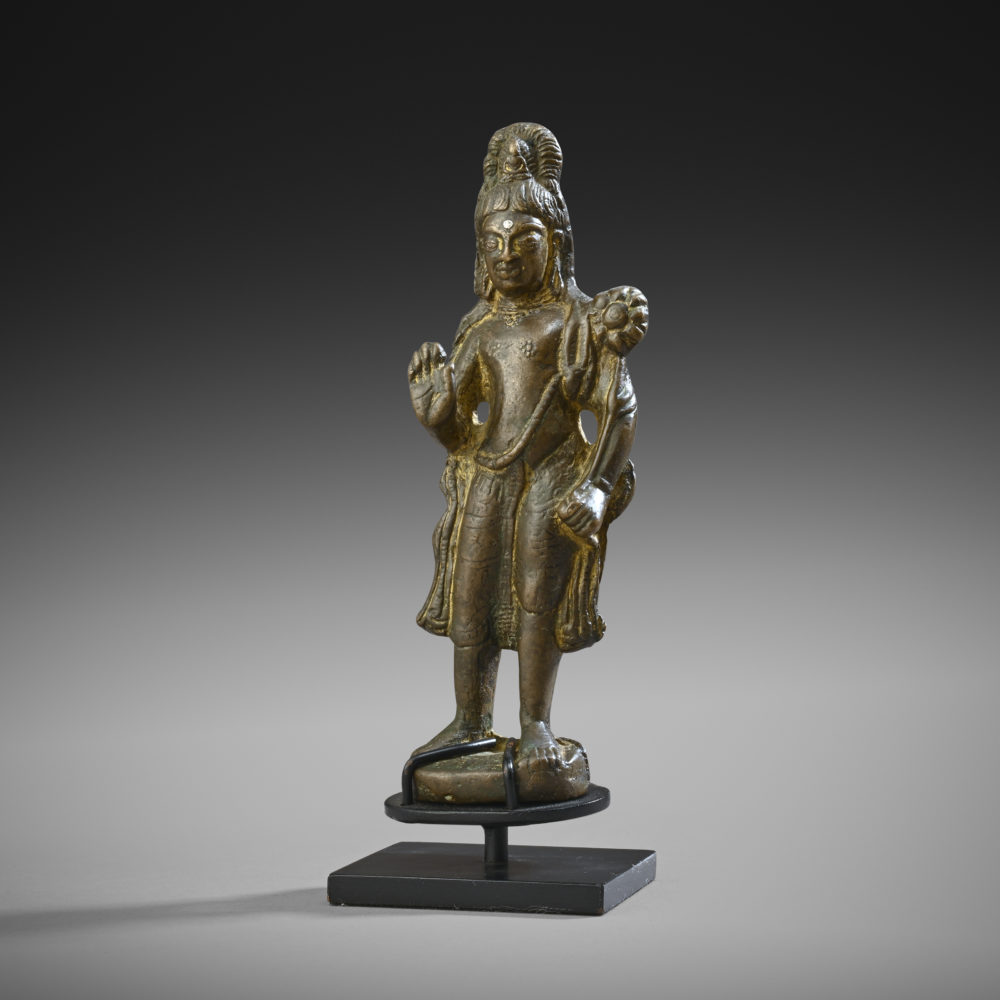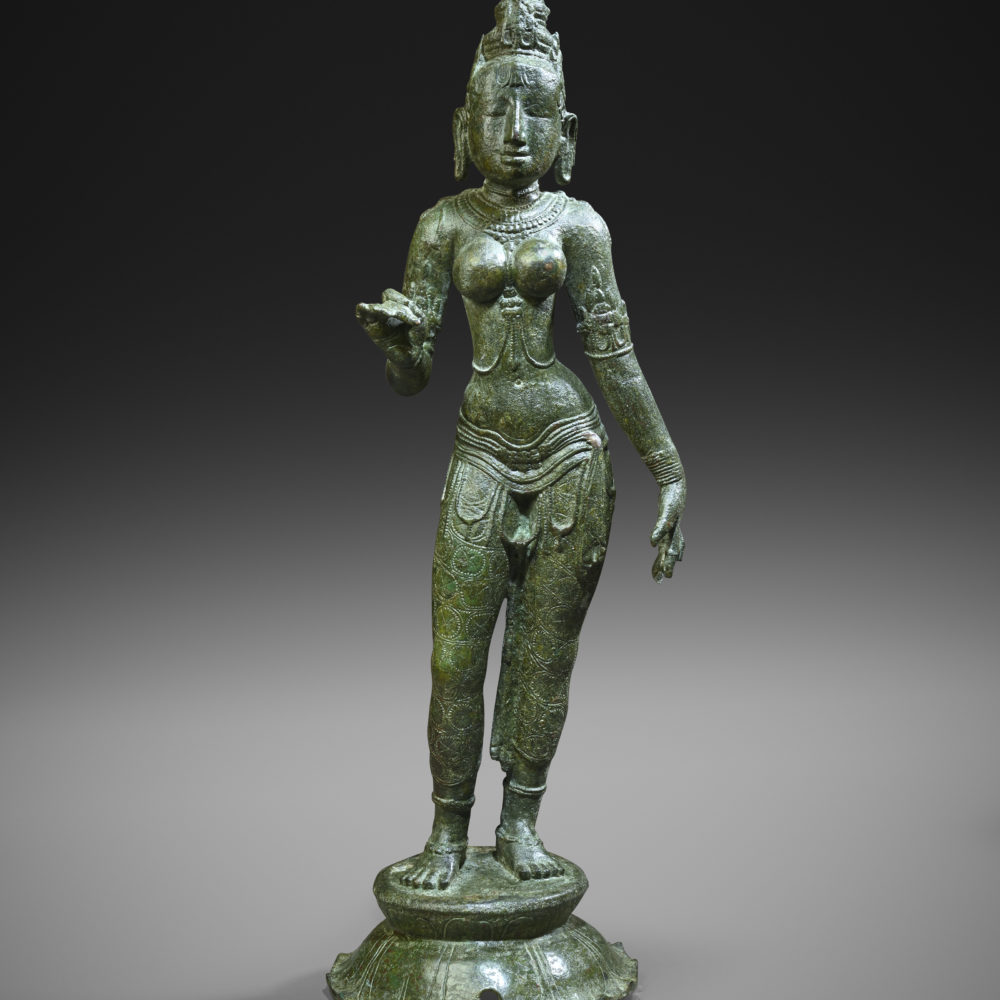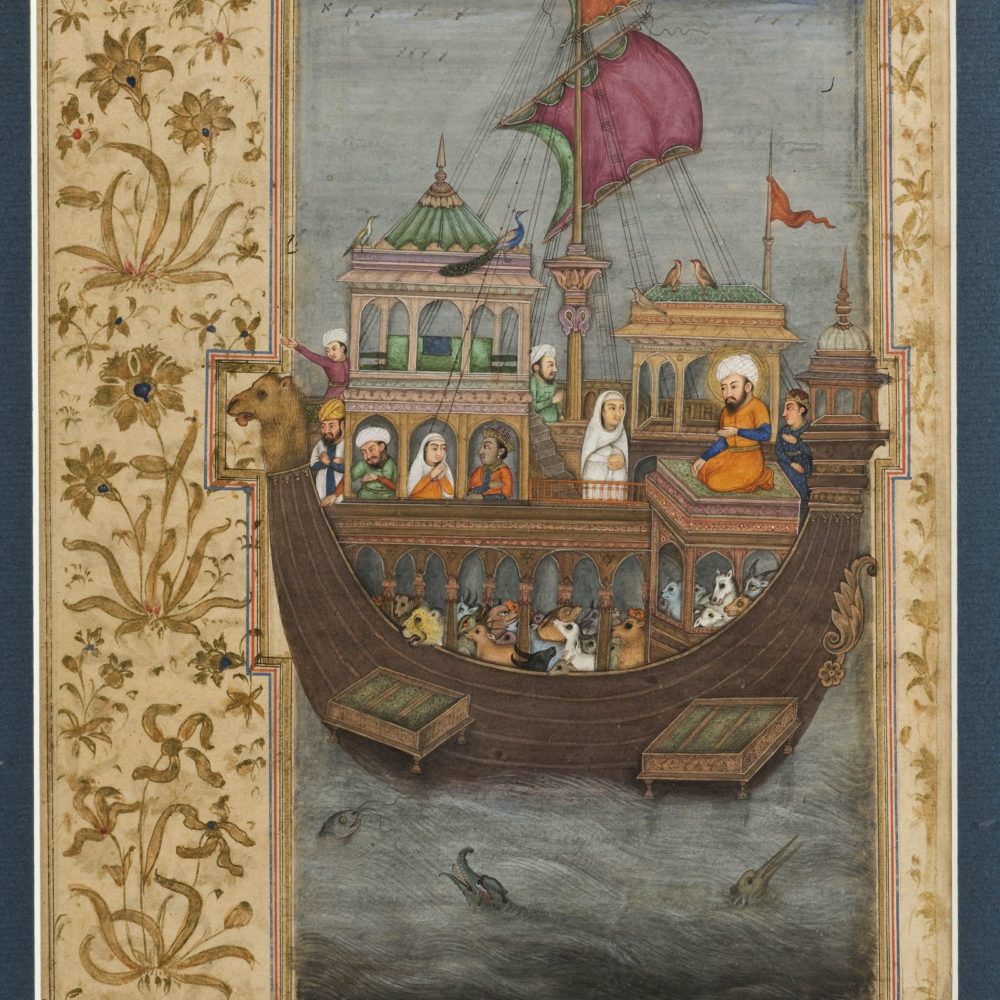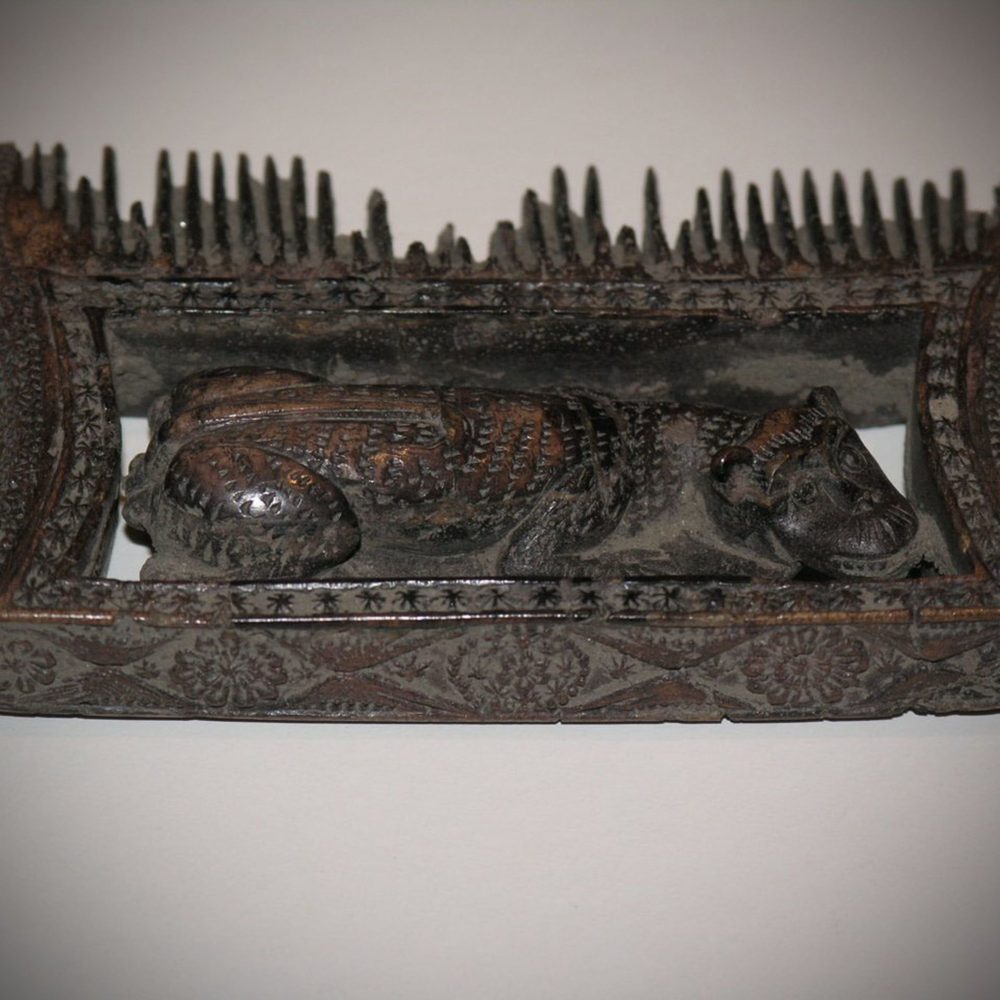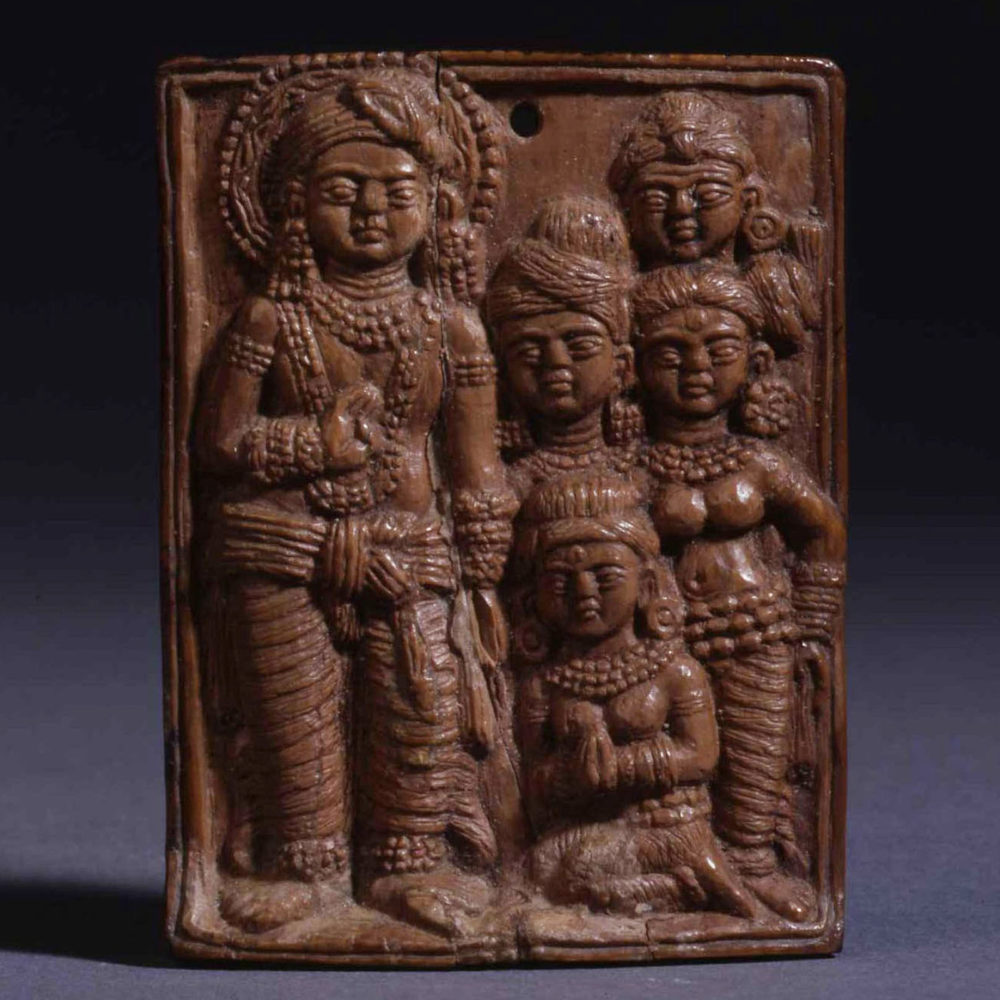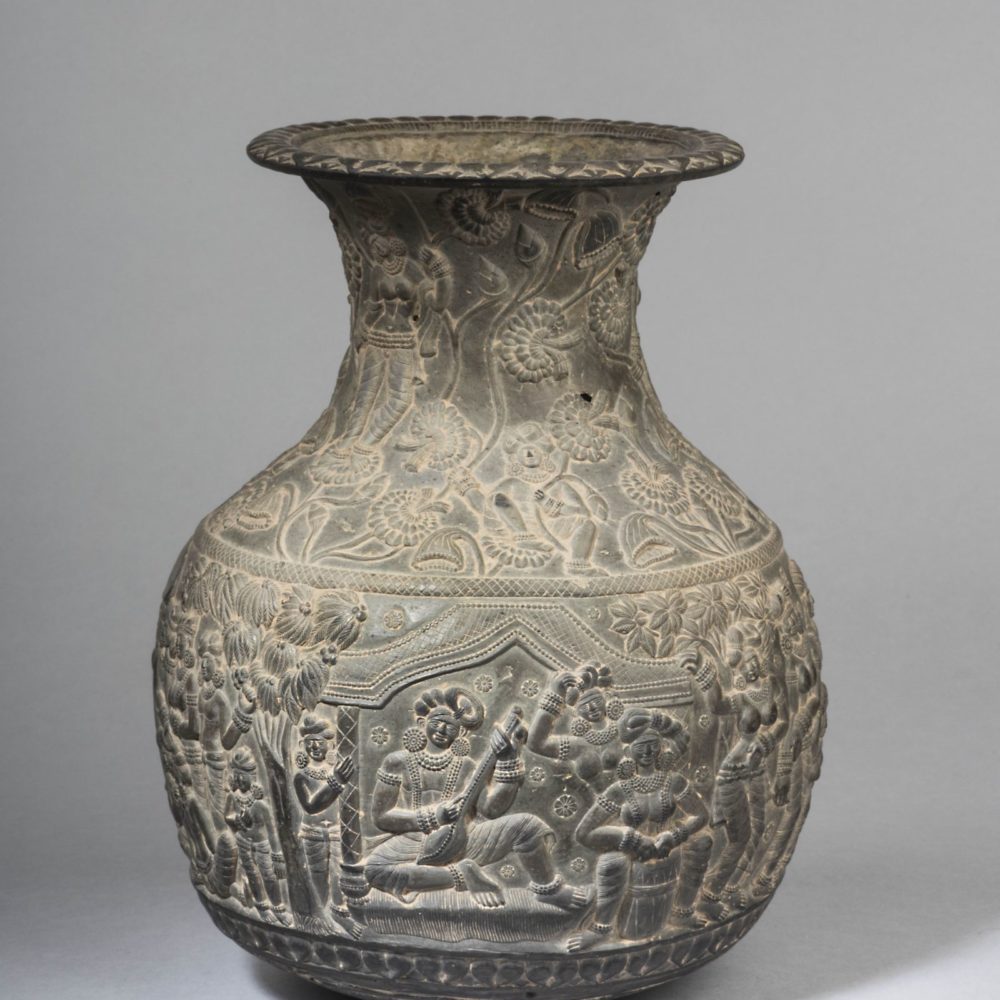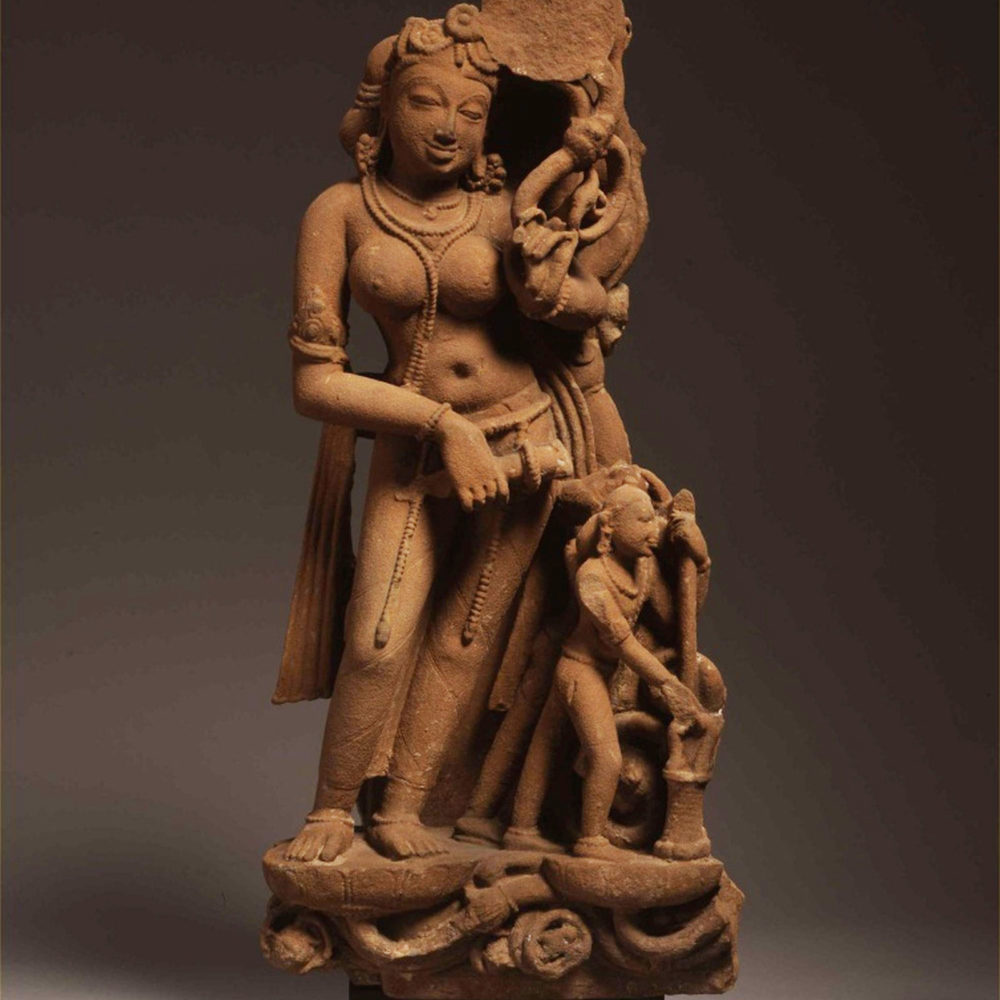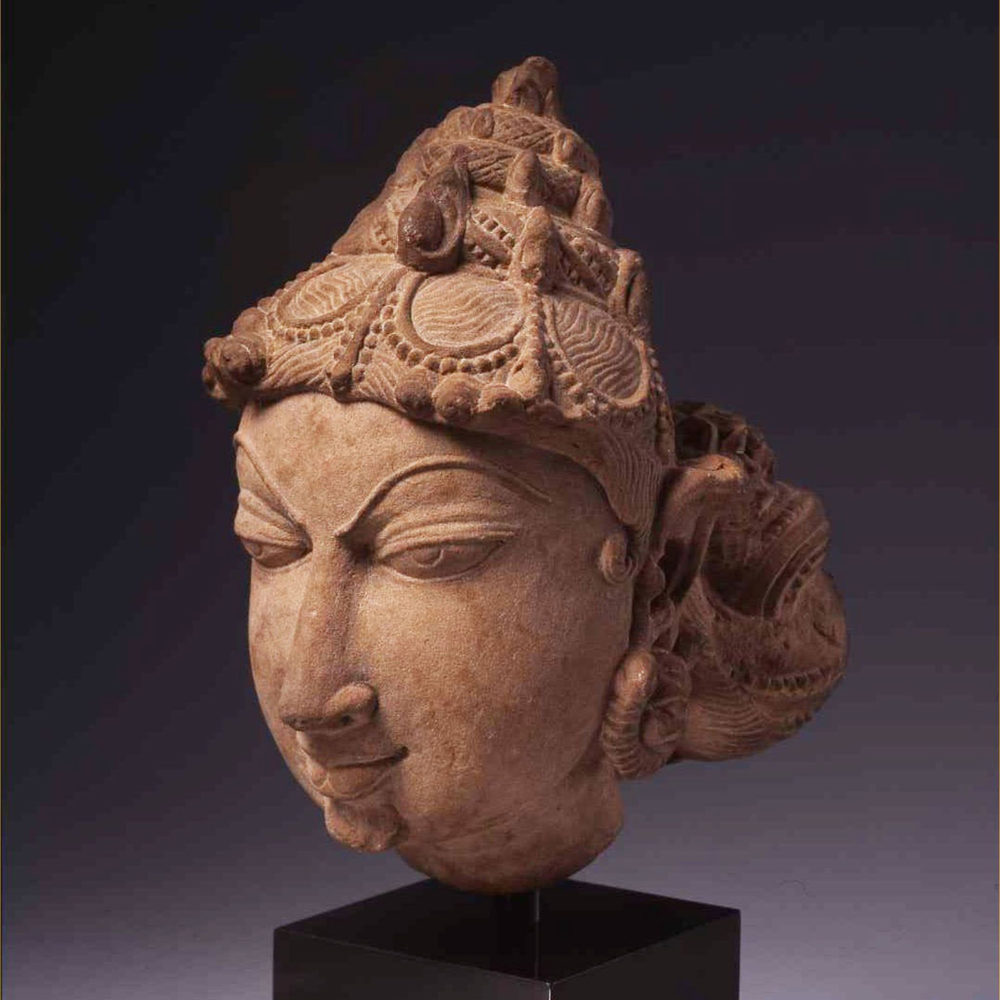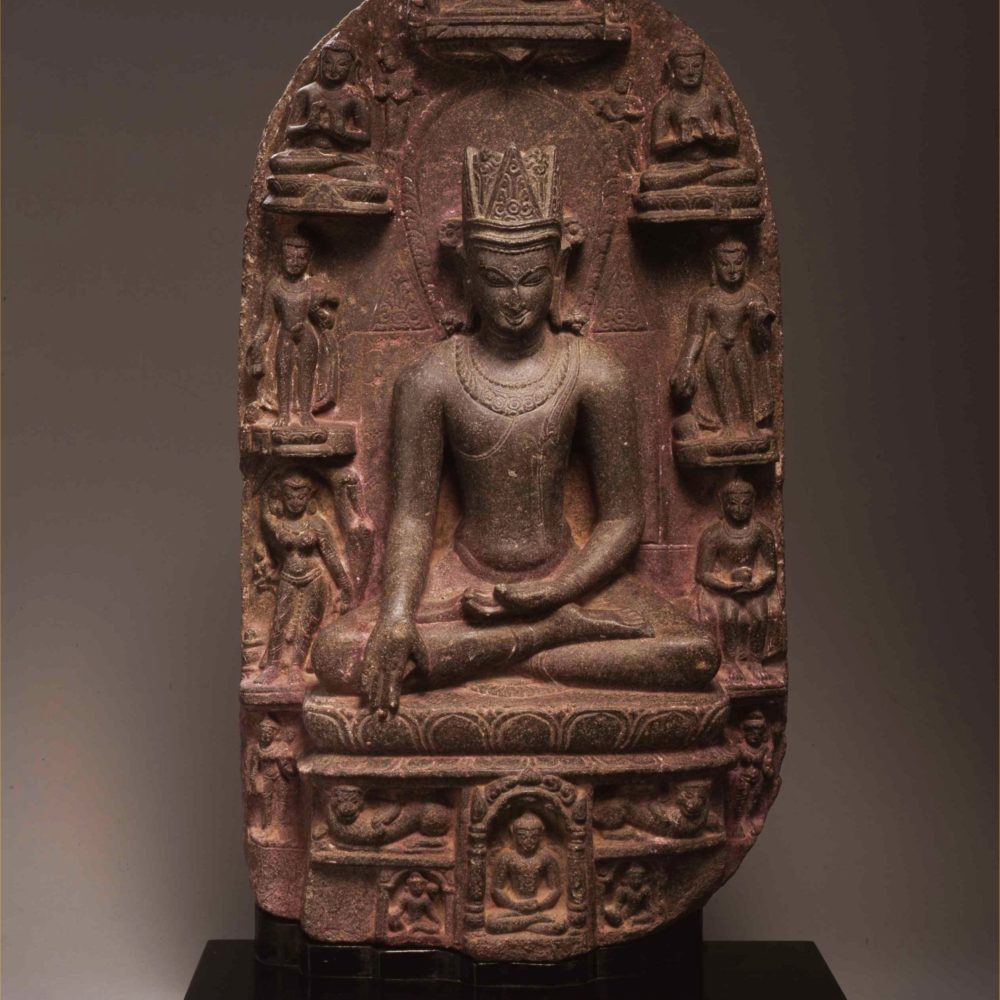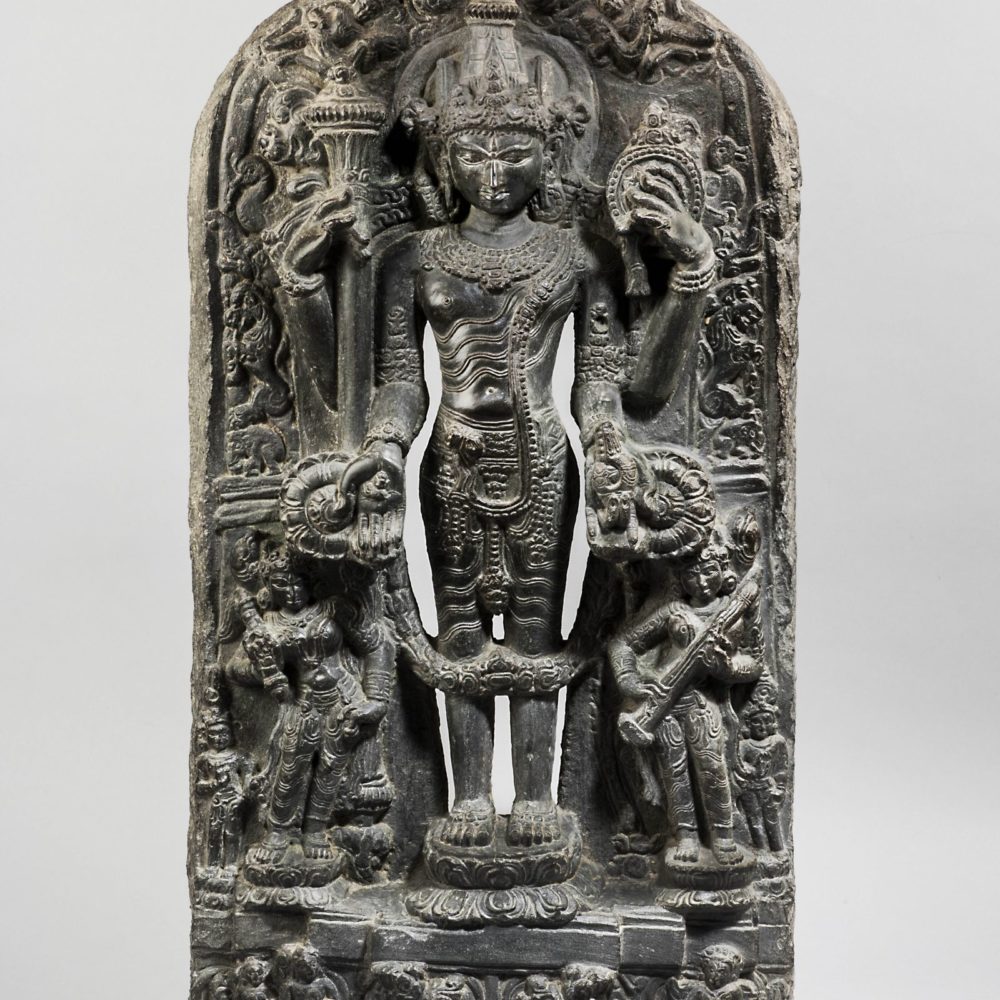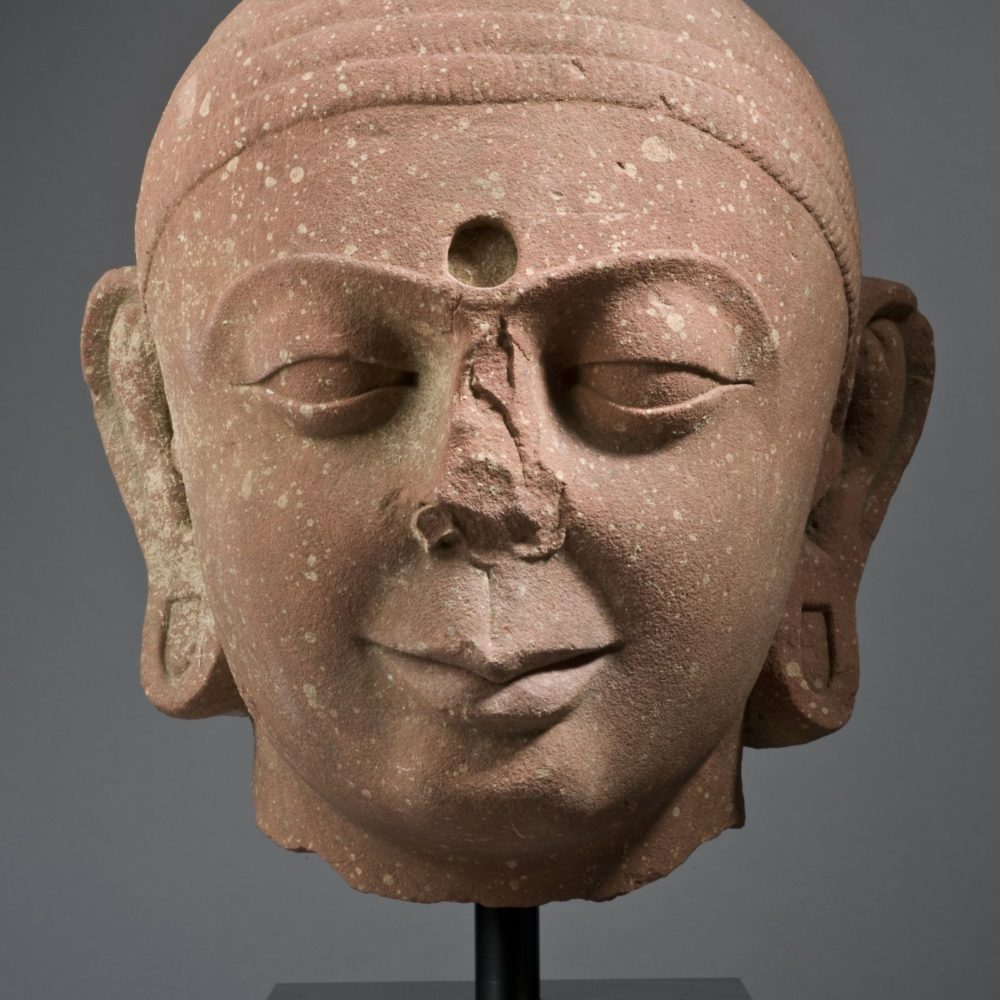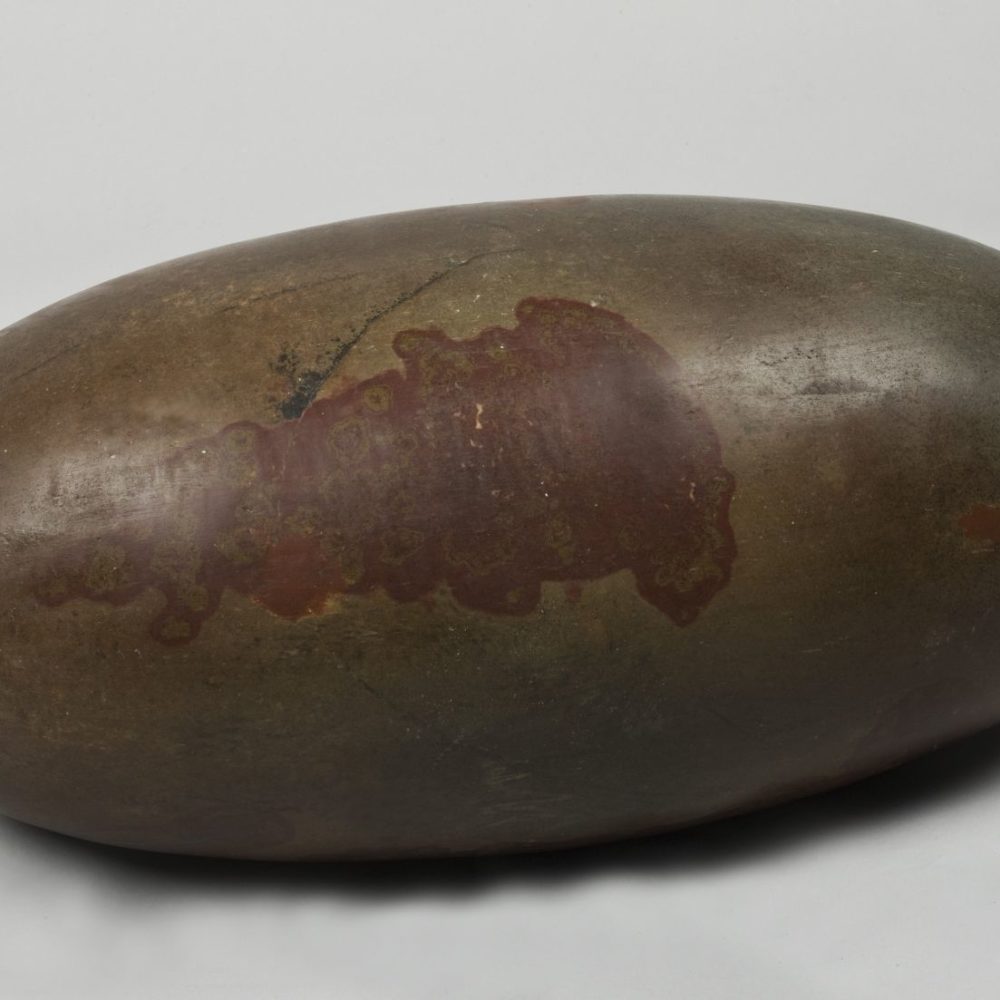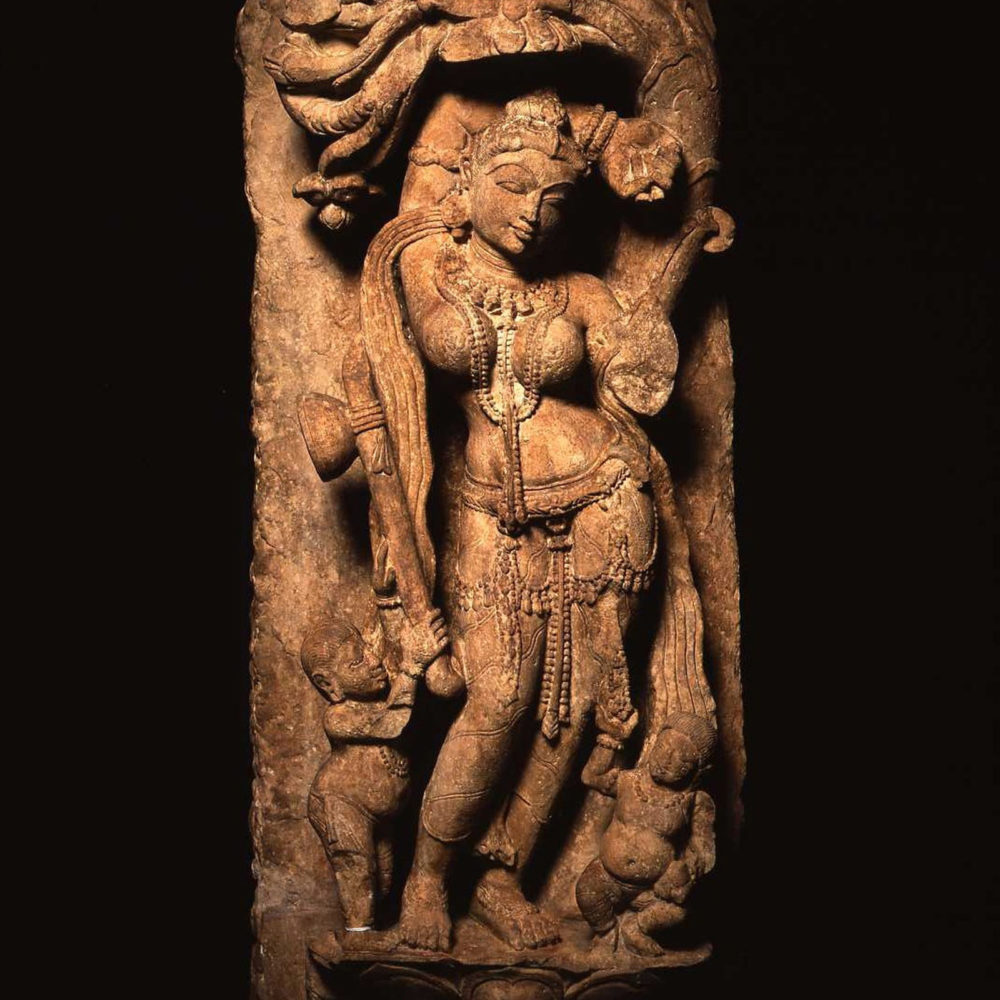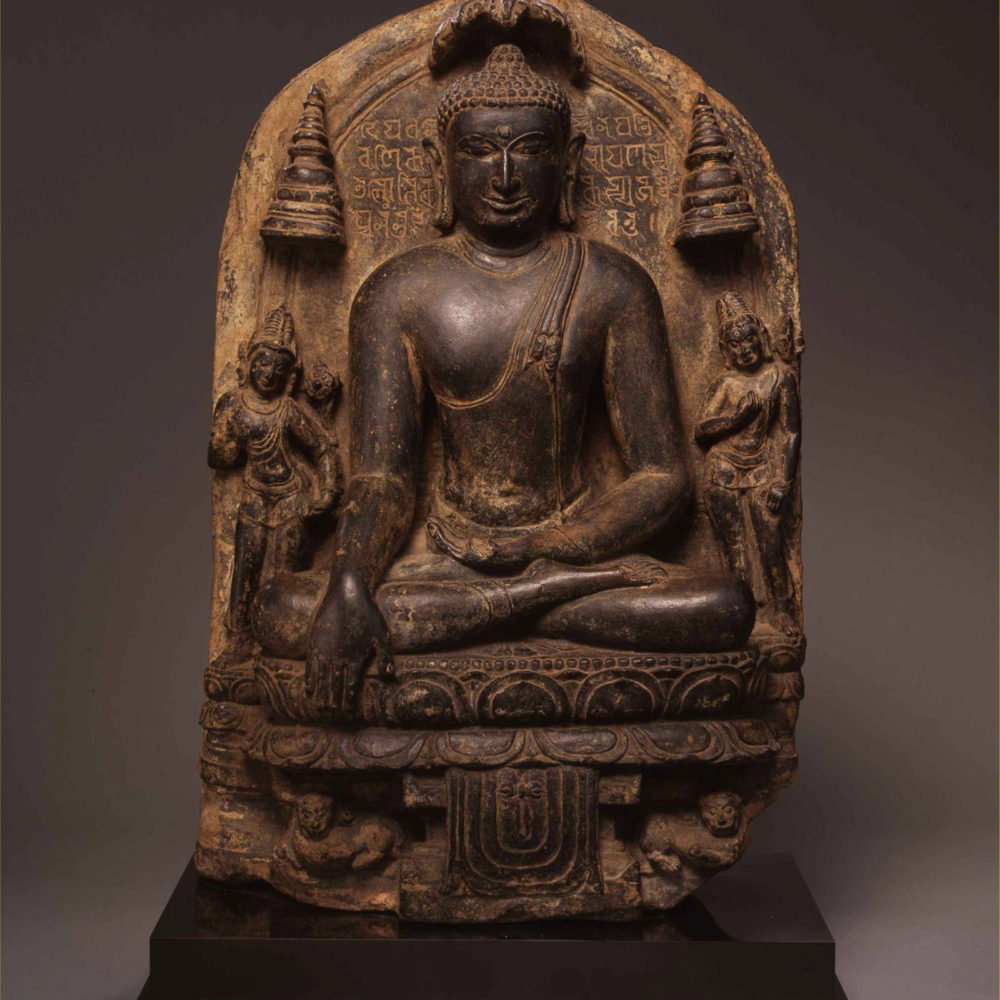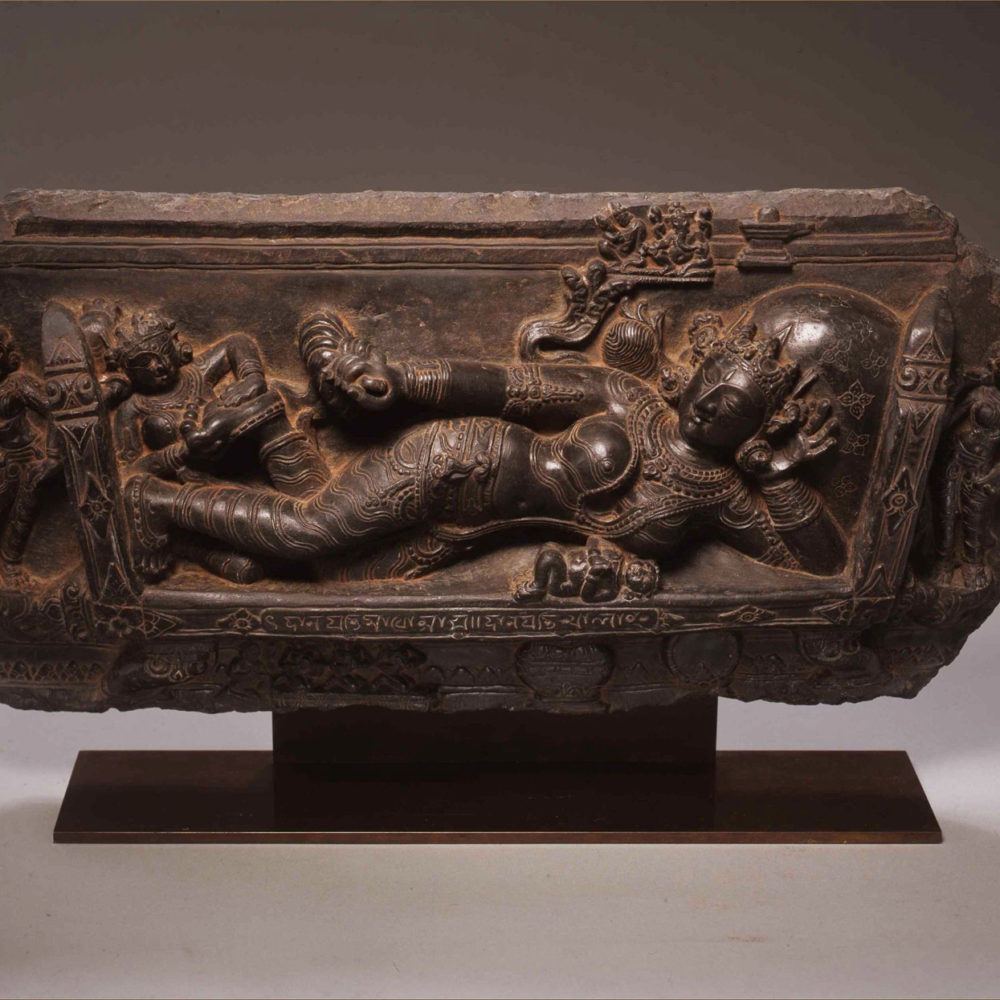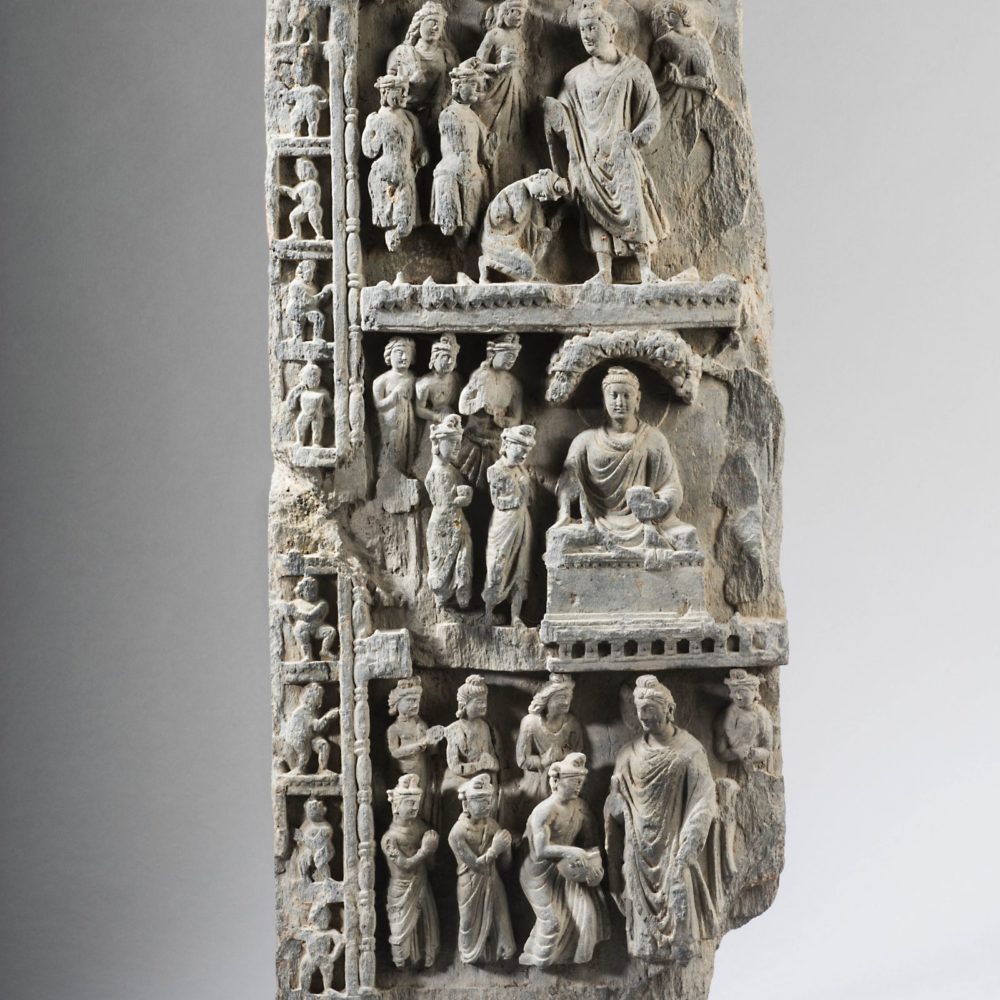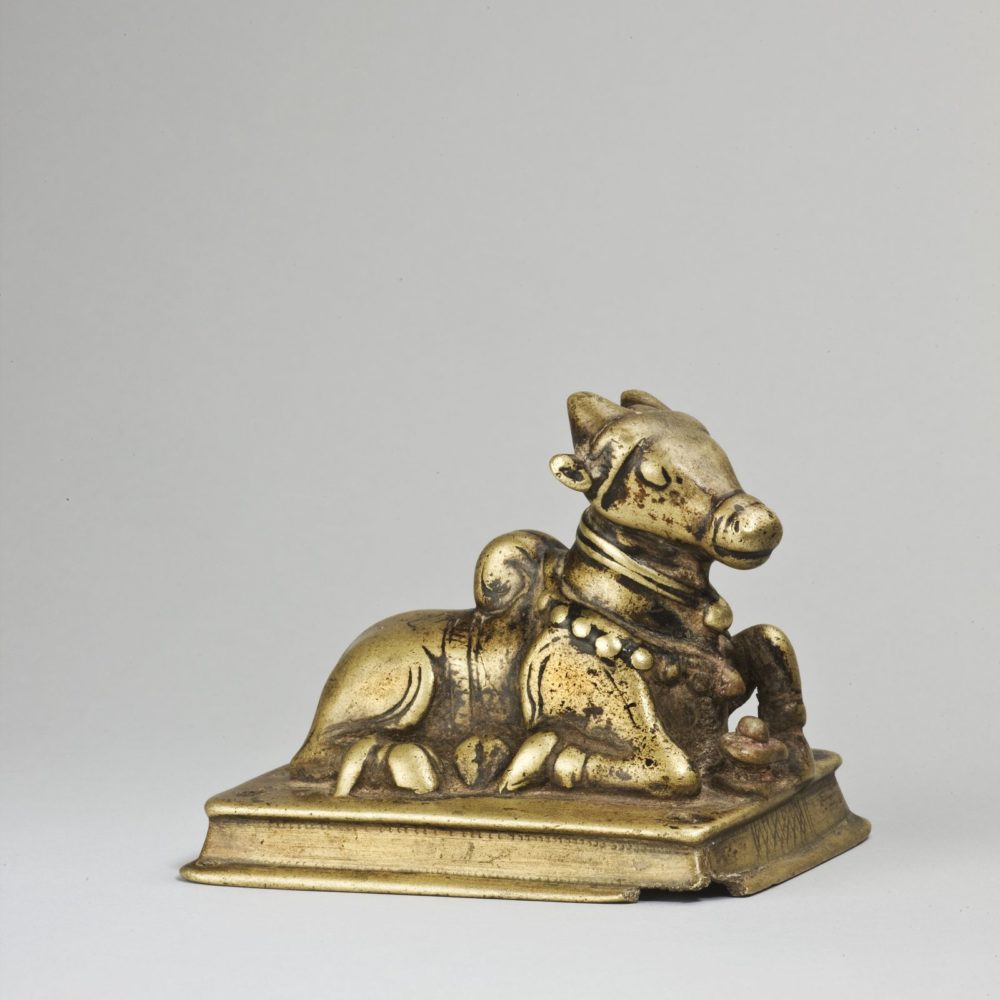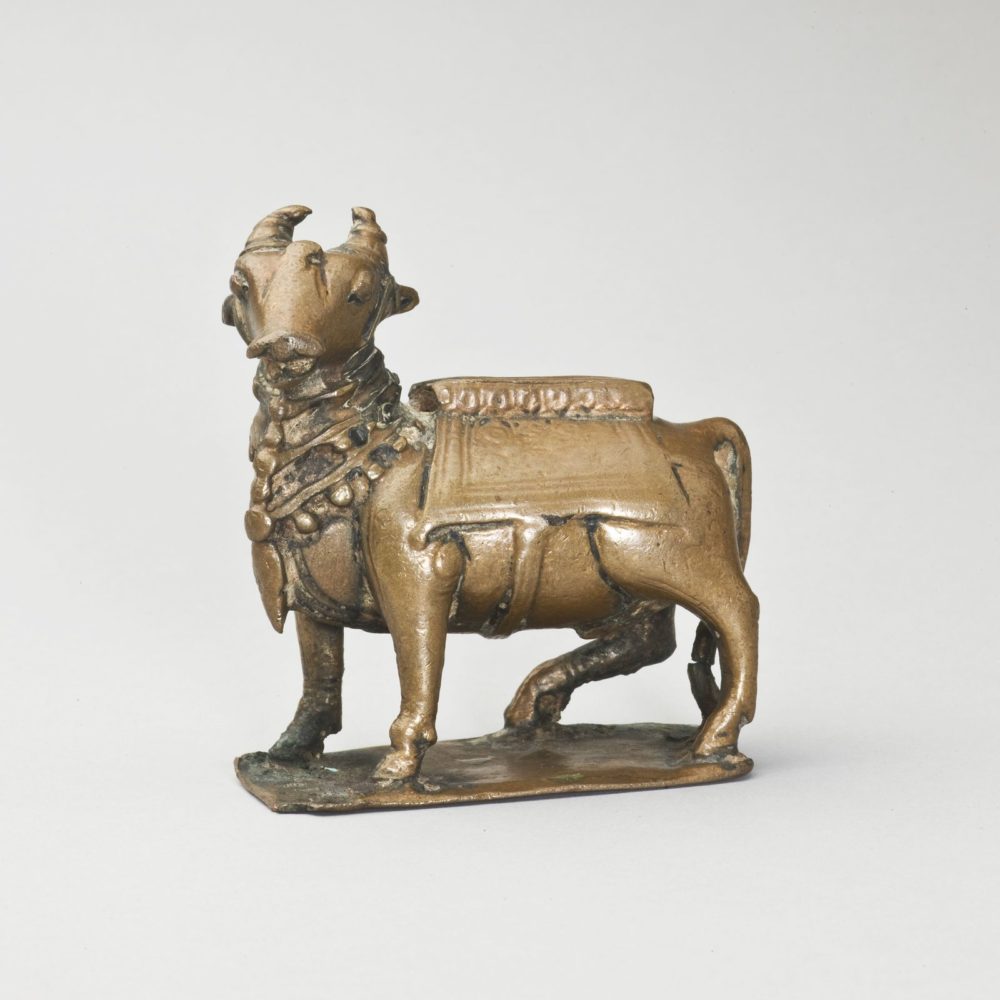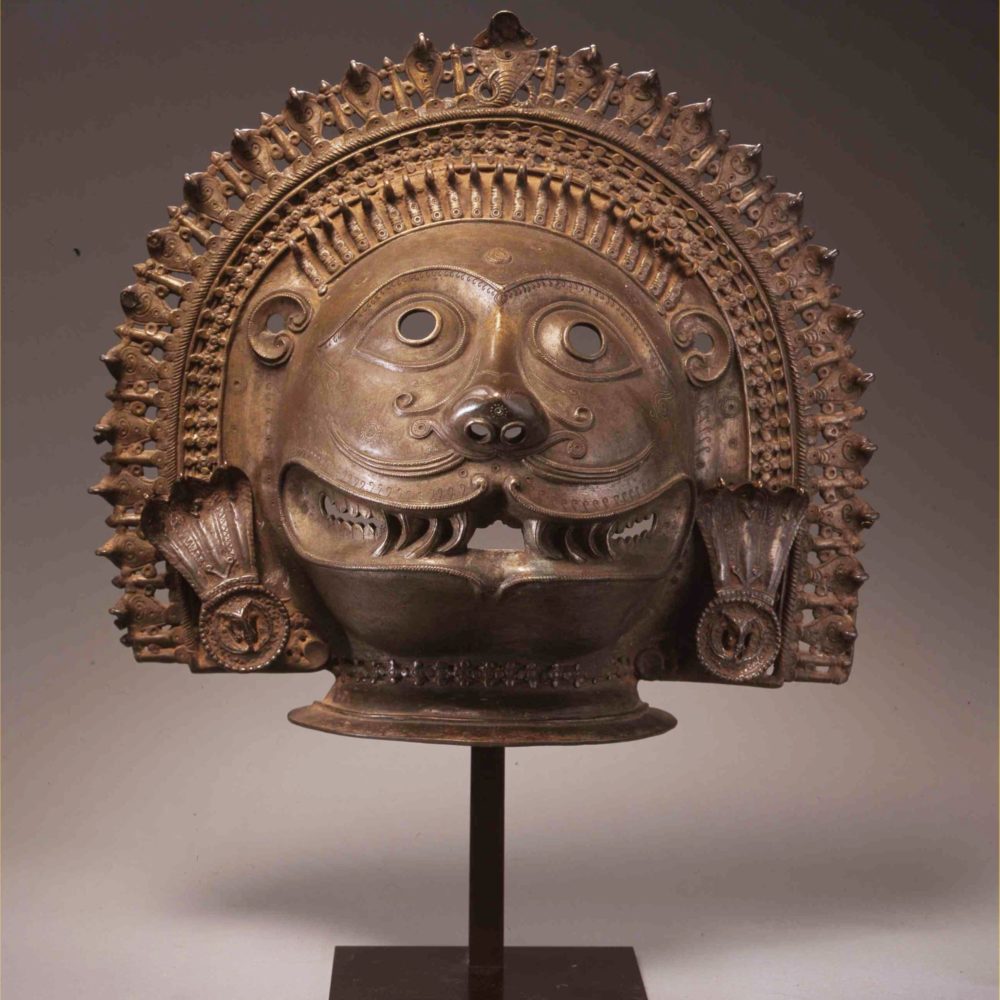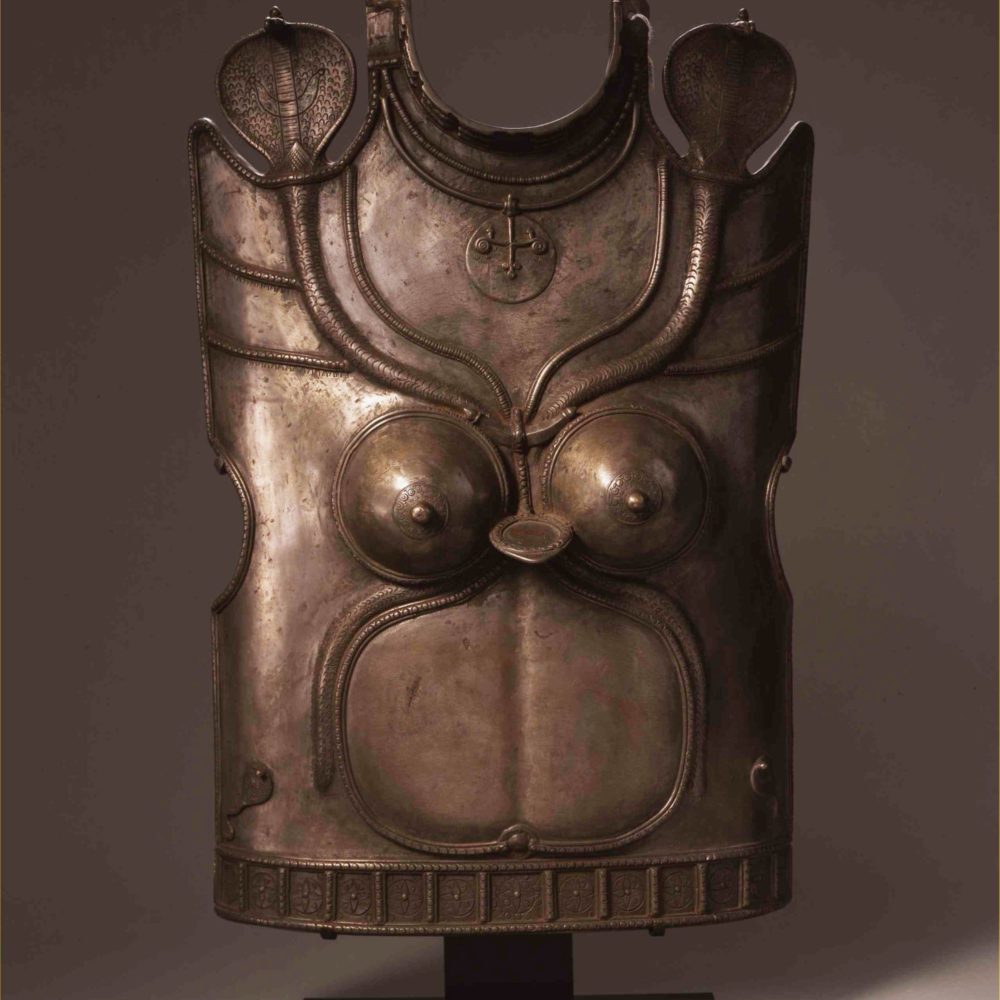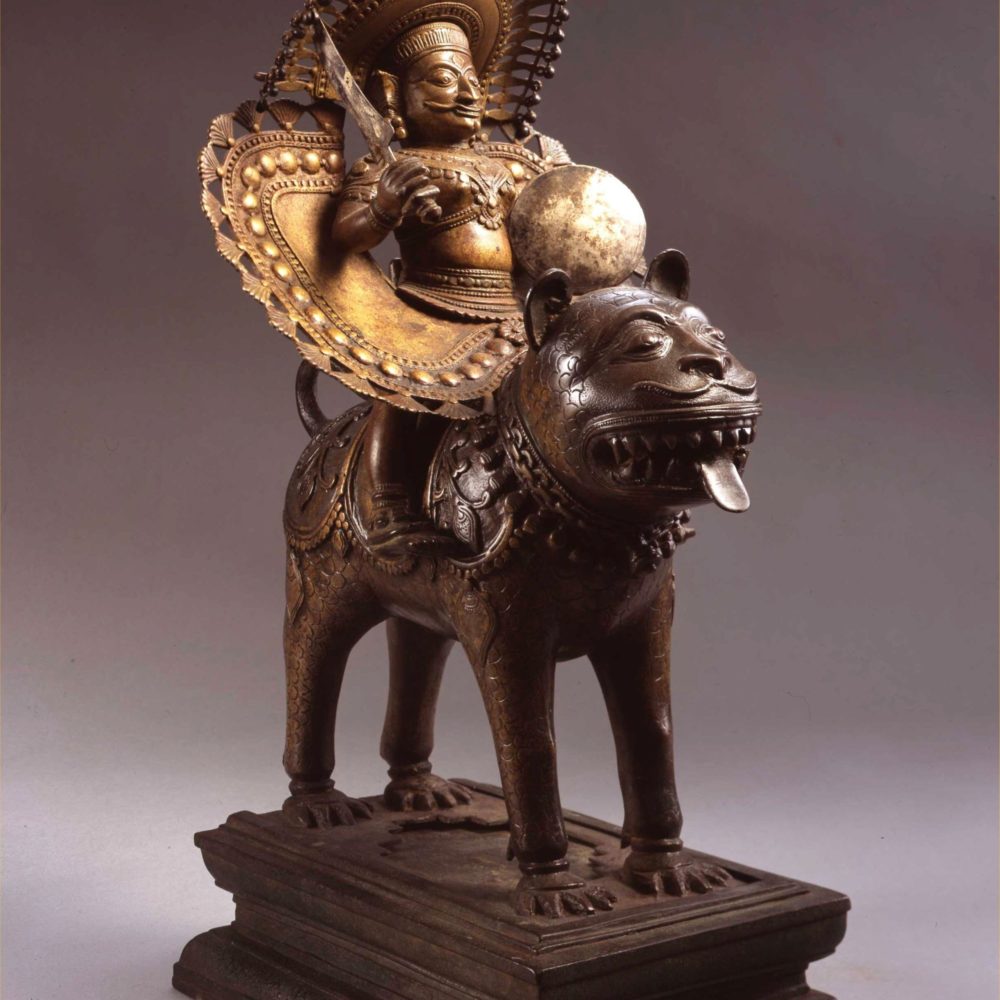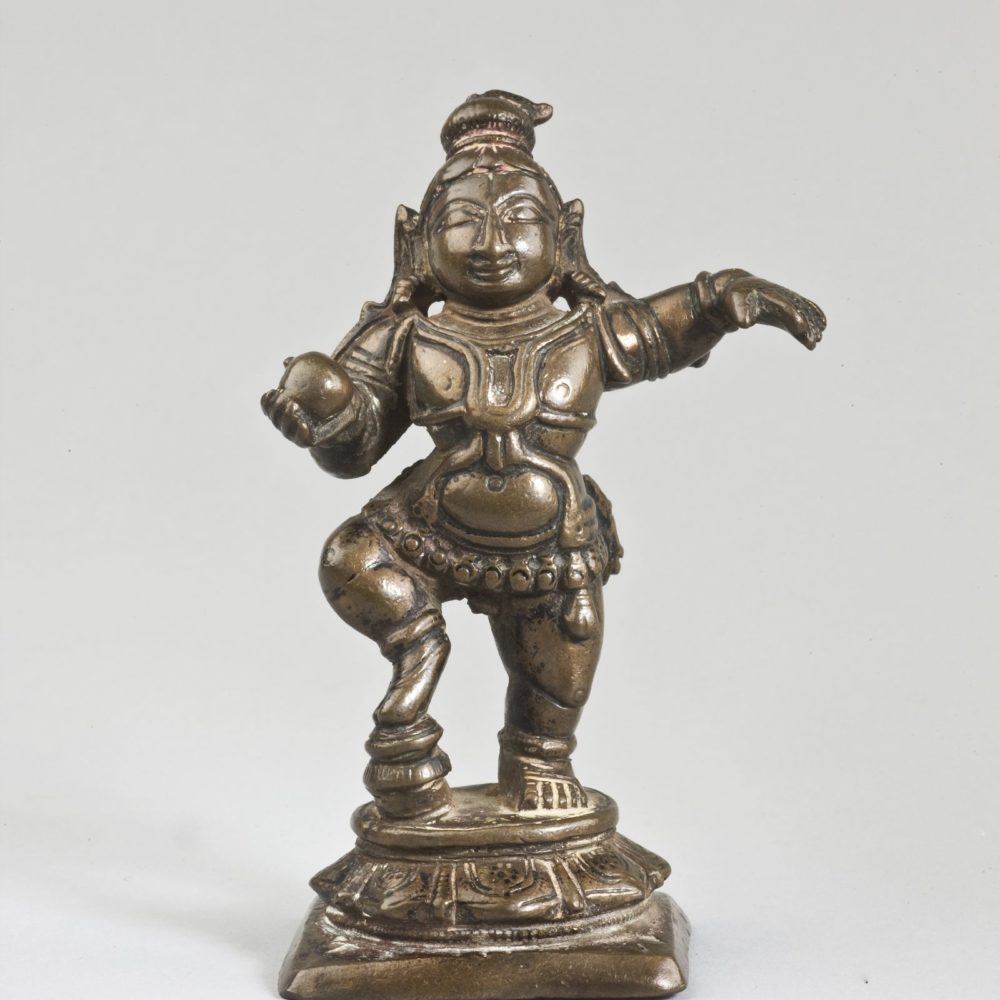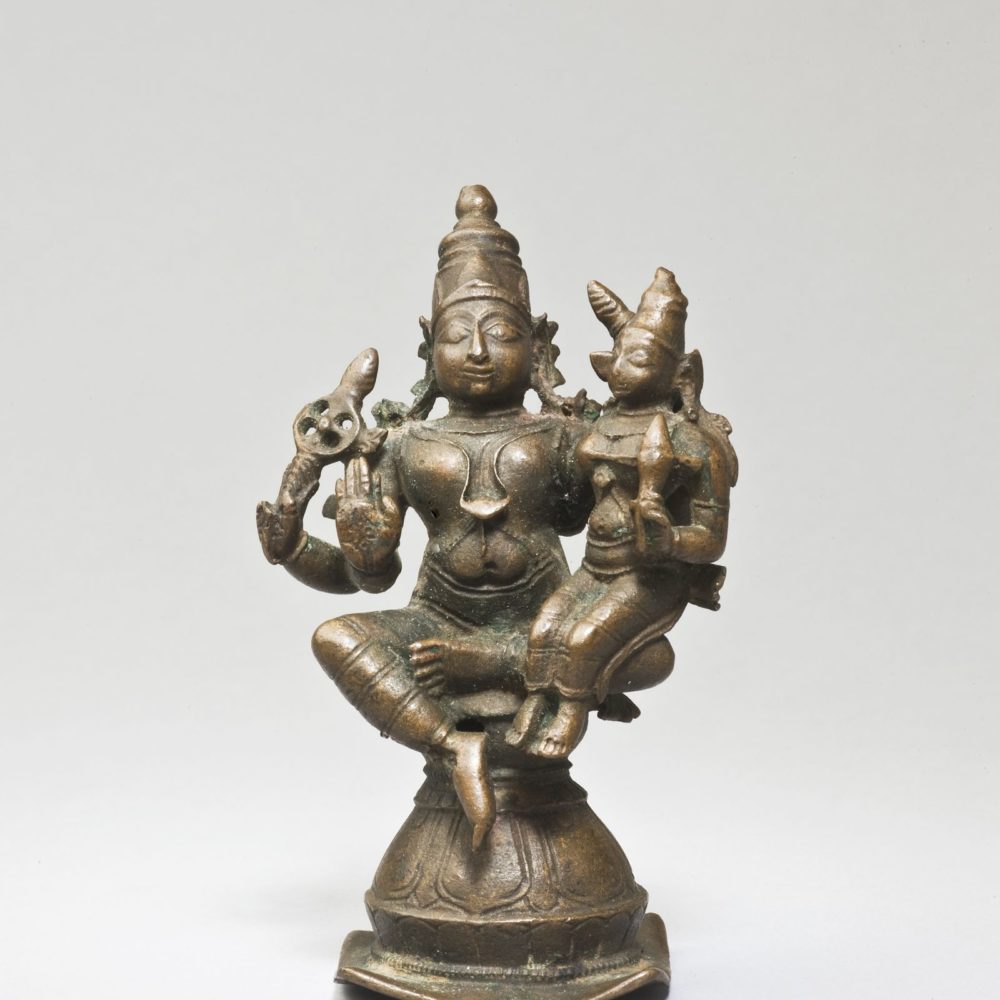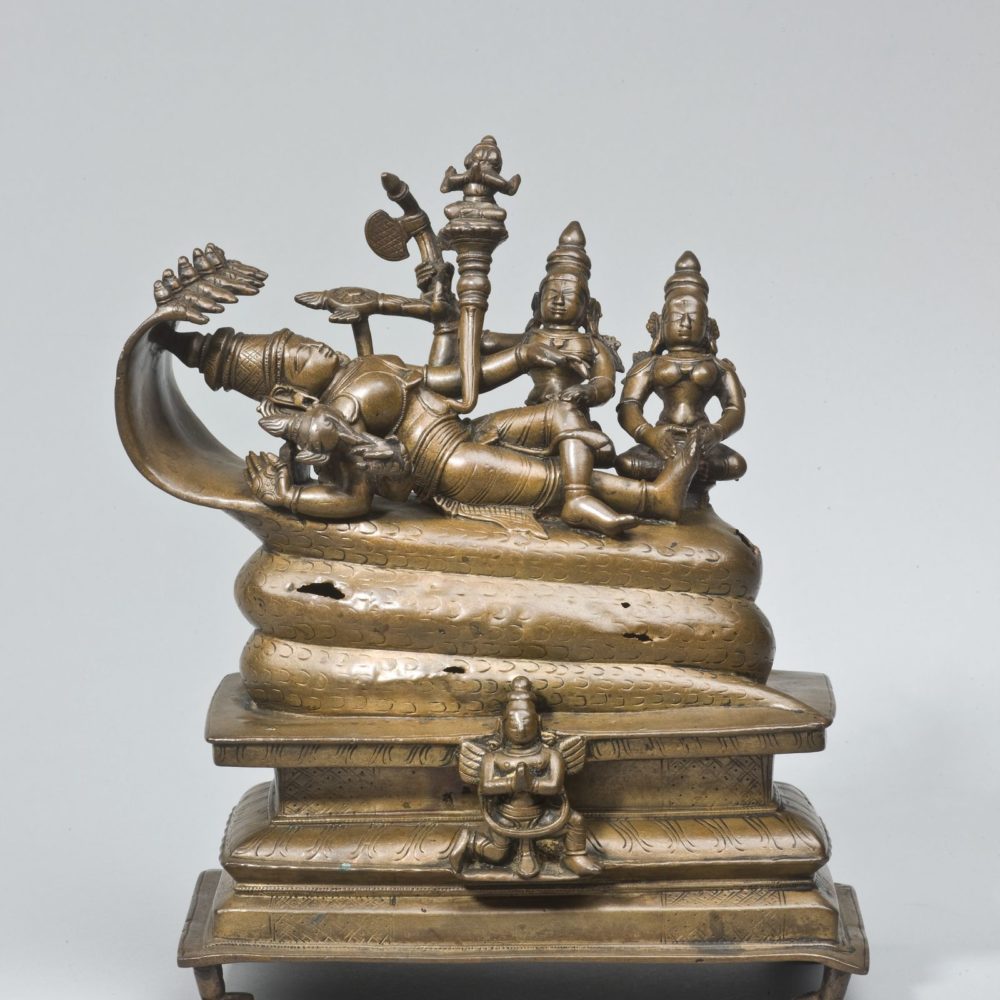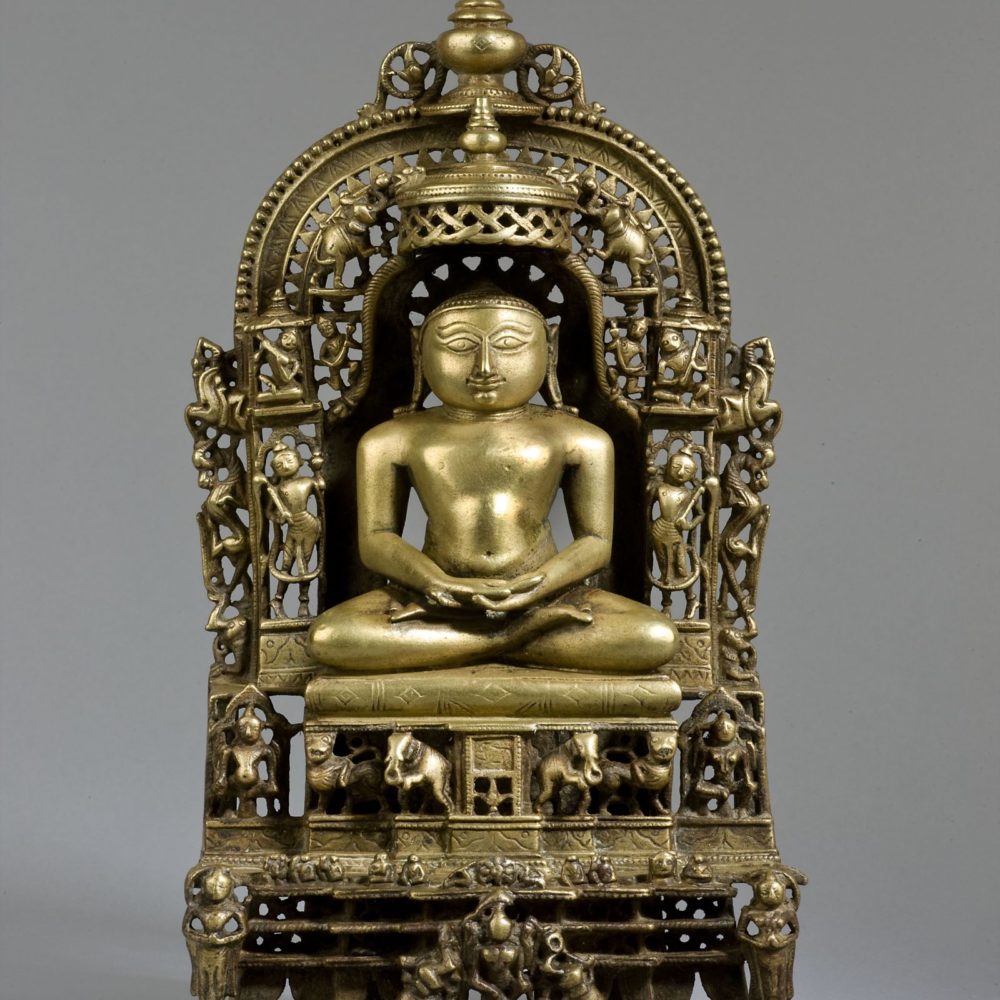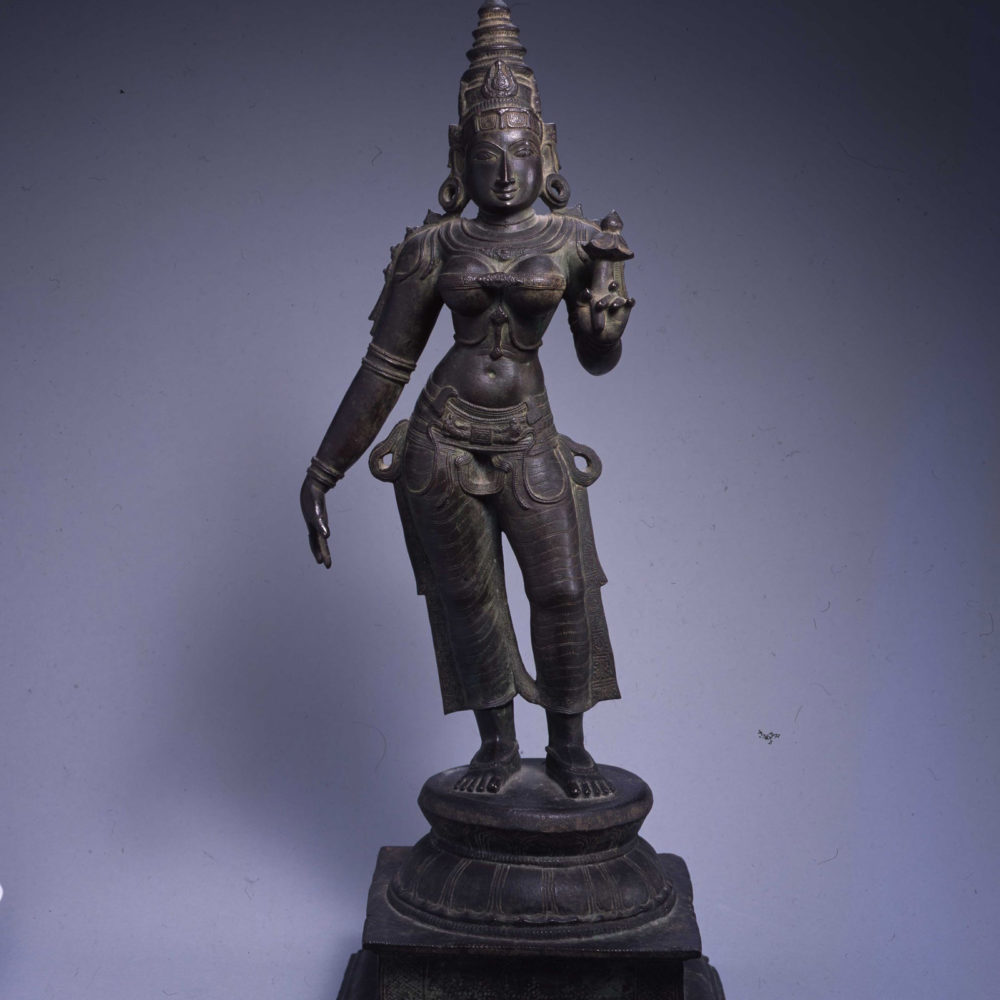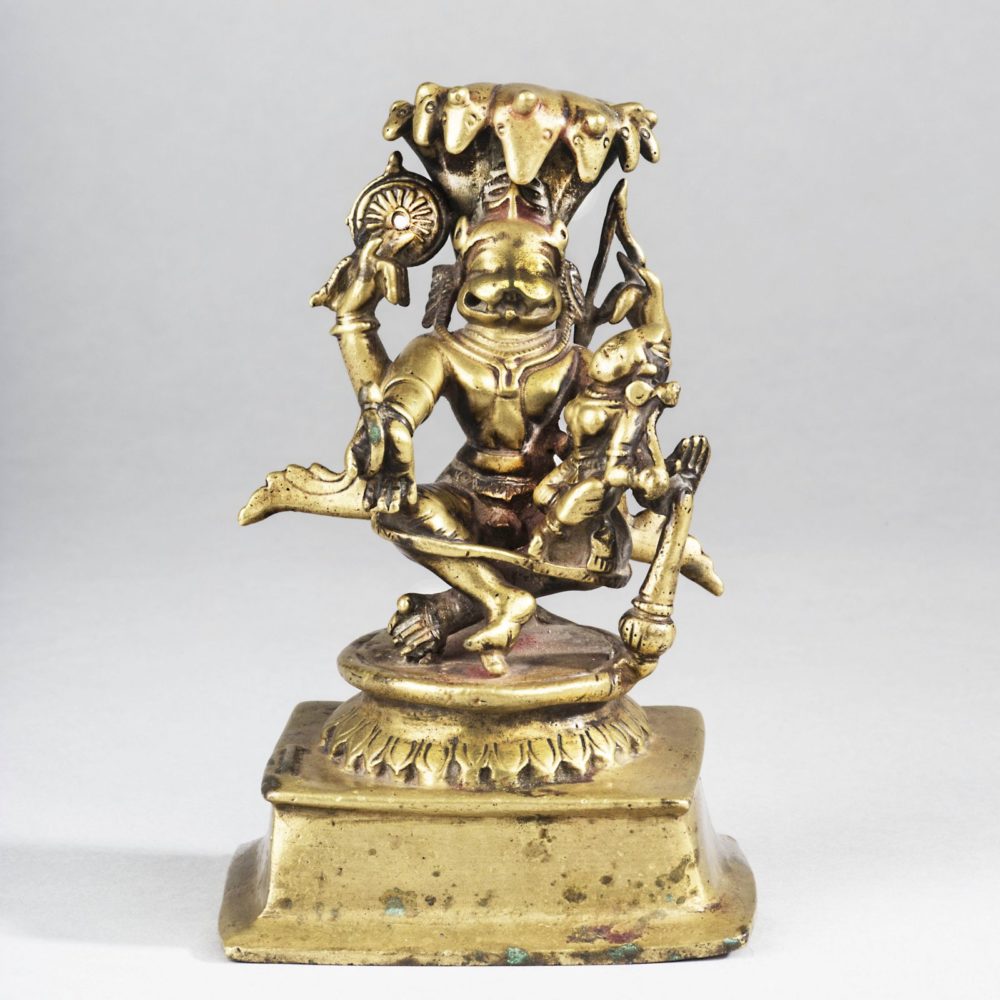Reclining Gaurī with child (Sadyojāta) Śiva
Pāla period, 11th century, Northeast India or Bangladesh (Probably Northwest Bengal)
Length: 58 cm, 22.8 inches - Height: 29 cm, 11.4 inches
The image of the mother goddess in Indian art is an archetypal one. From Ambikā- the Jain mother goddess – to Māyā, mother of the Buddha, Indian religious mythology is rich in divine, maternal, Madonna like figures.¹ Whilst this horizontal stele ostensibly characterizes this tradition, it actually represents a specific passage within the Hindu Purānic text, the Brahmapurāna, whereby the goddess Gaurī (‘fair complexioned Parvati’), encounters her consort to be, Śiva, albeit in neonate form (sadyojāta).² This subject matter was extremely popular within Bengal sculpture of the mid Pala period, with several similar depictions found in northern Bangladesh and the adjacent districts of West Bengal.³
Within the scene, Gaurī lies elegantly across a luxurious cot, framed by attentive maidservants at either side in tribhangha poses, each equipped with flywhisks.⁴ Whilst a large, rounded cushion incised with a four-petal floral motif supports her upper body, she also rests her head upon her left hand with her palm presented frontally, as if offering abhaya (reassurance) mudrā to the beholder. The walls of the cot slant outwards at about a ten-degree angle, and are decorated with more four-petal medallions. Gaurī’s left leg is crossed and raised behind her right leg, as a third maidservant massages her left foot. Her right arm is stretched out parallel to her side, as she grasps a blooming lily (utpala) in her hand. At her left side the child figure of sadyojāta-Śiva is respectfully turned to the spectator in añjali mudrā.
The goddess is dressed in a long, striated sari secured by beaded belt decoration, with a small ornate bow to her side. Whilst her garment is separated at her waist to reveal her bare stomach and hips, three diagonal striations continue around her left shoulder where they meet a long beaded necklace, as well as what appears to be a yajñopavītam (sacred thread) draped down her left side. She is also adorned with a heavy, stiff collar necklace characteristic of Gaya District sculpture⁵ as well as a three-tiered, beaded tiara. Details such as Gaurī’s fingernails have been carved with loving attention, as have her full cheeks, tear-shaped tilaka and wide, deeply ridged eyebrow. Due to the fact that the depth of carving appears to fade out when viewed from above (such as on the heads of the attendants), it is likely that the stele was originally intended to be viewed frontally from below.
A long undecorated horizontal band frames the scene at its top, whilst a broader horizontal band decorated with triangular ‘half-lotuses’ extends across its bottom. Upon the wall above Gaurī’s head, are the figures of Kārttikeya (Skanda), Gaṇeśa and a Śiva-linga, confirming the Śaivite nature of the stele.⁶ The two sons appear connected to their mother by a kind of ribbon, which emanates from behind her side beside a bulbous, striated object. Four kneeling devotees in añjali are also depicted beneath the horizontal base of the cot. Whilst three of these figures are represented on double lotus bases (indicative of their divinity), a single figure is also presented without such a base, suggesting that this may be the donor to whom the stele is inscribed. To the right of these devotees, are two items- an ornate cauldron and a rimmed circular object.⁷ The later probably represents Gaurī’s mirror, which she uses to harmonize Shiva’s extreme asceticism with the illusory world.
Inscription
[ornament] dānapati mā[dho/khā ]māsa || dā napati [mā]ālāï This simply lists the two donors as probably mādhomāsa / mākhāmāsa and mālāï /mālā, presumably husband and wife. The “m” of Mālā is a guess, it could be read as vyā, ndhā, and a few other possibilities. Note to the translation: there is an element of uncertainty over the names of the donors. This could perhaps be because the engraver may have been illiterate; in that case someone else presumably wrote the names with chalk and a craftsman copied as best he could, but distorting some characters. These votive inscriptions often have dubious elements to them. Translated by Somadeva Vasudeva, Columbia University
For more research information please click here.
Similar Examples
5000 Years of the Art of India, Mario Bussagli & Calembus Sivaramamurti, published by Harry N. Abrams, Inc., New York – pages 33, 200 & 201.
Notes
¹ Other Indian mother-goddess figures include Devakī (mother of Krsna), Yaśodā, foster-mother of Krsna; Hārītī, the protectress of all children; Kauśalyā, mother of Rāma; and so on.
² See Bhattasali. 1929., p. 136-142.
³ See, Haque and Adalbert J. 2008., p. 78.
⁴ The attendant behind Parvati’s head also seems to hold a small rectangular object, perhaps a book.
⁵ See Huntington. 1984., p. 112.
⁶ The Navagrahas (‘Nine Planetary Gods) are also frequently depicted on similar steles, as well as occasionally the Dikpāla (Guardians of the Directions).
⁷ Similar steles often depict various naivedyas (holy offerings) and upacāras (pujā attendances) in this area below the cot.
* The scene to which this stele references can be found within chapter XXXVIII of the Brahmapurāna, in a passage that reads:
“When the divine daughter of the Mountain came with a garland in her hands to the assembly of gods where she was to choose her husband, Siva, in order to test her, assumed the form of a child and was found sleeping on the lap of the bride. She, perceiving the child and coming to know through meditation that he was the god Siva himself, accepted him with pleasure. Then the daughter of the Mountain, glad to receive the husband that her heart desired for, returned from the assembly holding the child against her breast.”
(Passage from the Brahmapurāna, chapter XXXVIII. In Bhattasali, 1929., p137-138)
Sources:
Bhattasali, Nalini Kanta. 1929. Iconography of Buddhist and Brahmanical Sculptures in the Decca Museum. Rai S.N. Bhadra Bahadur, Dhaka, Bangladesh.
Bussagli, Mario and Sivaramamurti, Calembus. 1974, 5000 Years of the Art of India. H.N. Abrams, New York.
Haque, Enamul and Gail, Adalbert J. Eds. 2008. Sculptures in Bangladesh: An Inventory of Select Hindu, Buddhist and Jain Stone and Bronze Images in
Museums and Collections of Bangladesh (up to the 13th Century). The International Centre for Study of Bengal Art, Dhaka, Bangladesh.
Lefèvre, Vincent and Boussac, Marie-Françoise. Eds. 2000. Art of the Ganges Delta: Masterpieces from Bangladeshi Museums. Musée Guimet, Paris.
Pal, Pratapaditya. 1988. Indian Sculpture: A Catalogue o the Los Angeles County Museum of Art Collection (Volume II). University of California Press, Berkeley.


